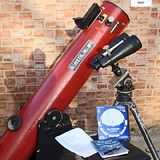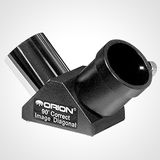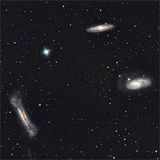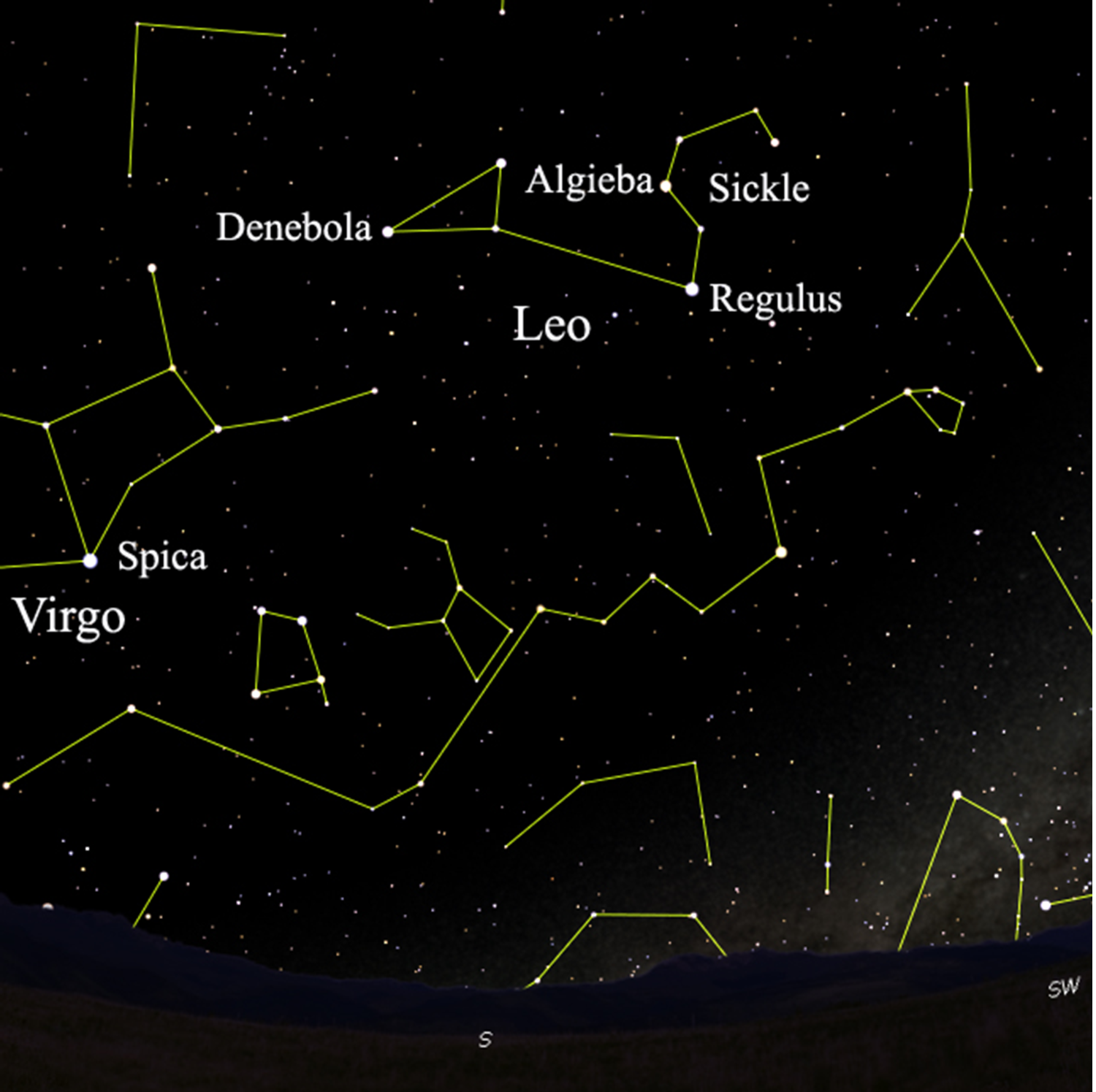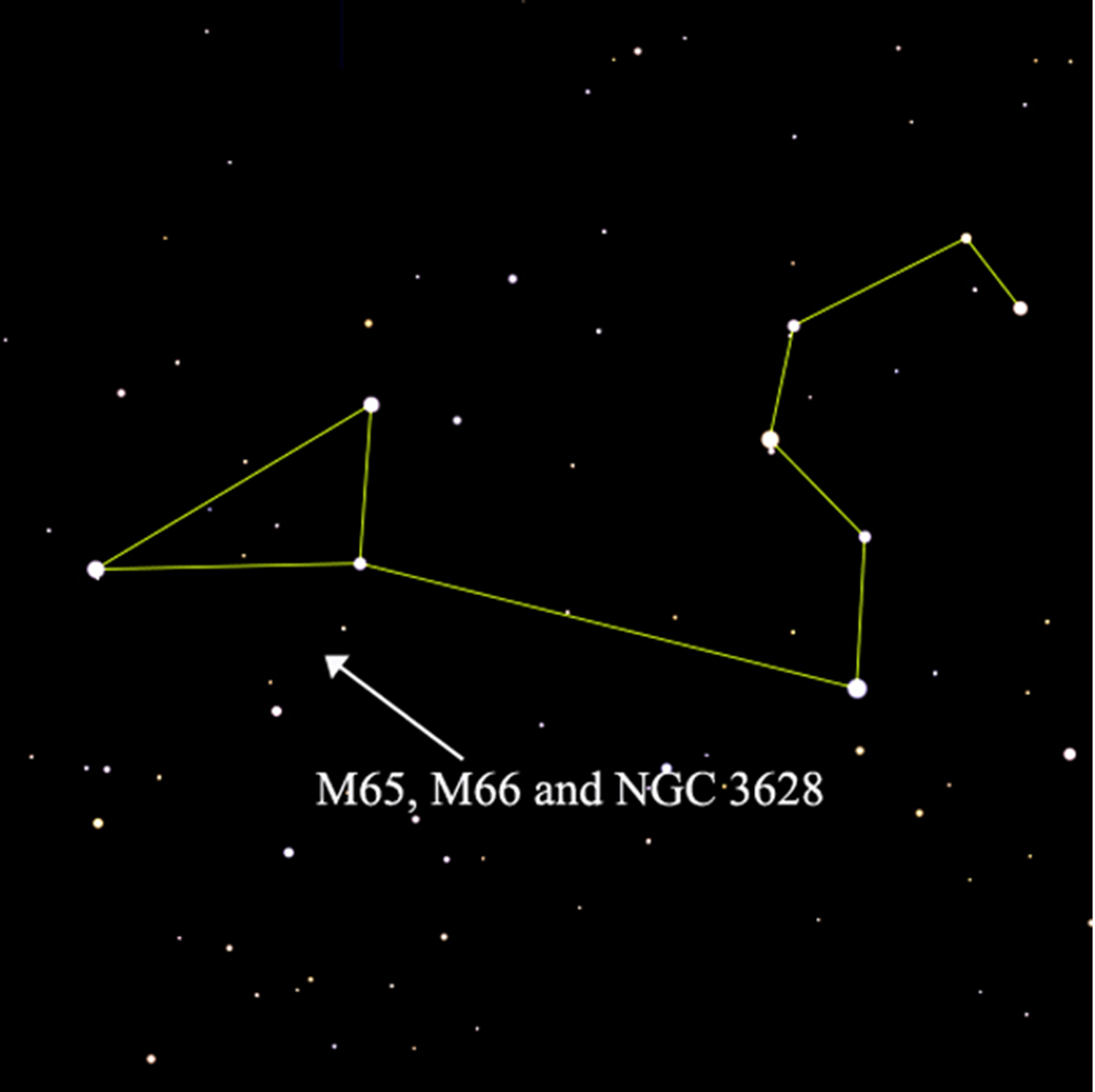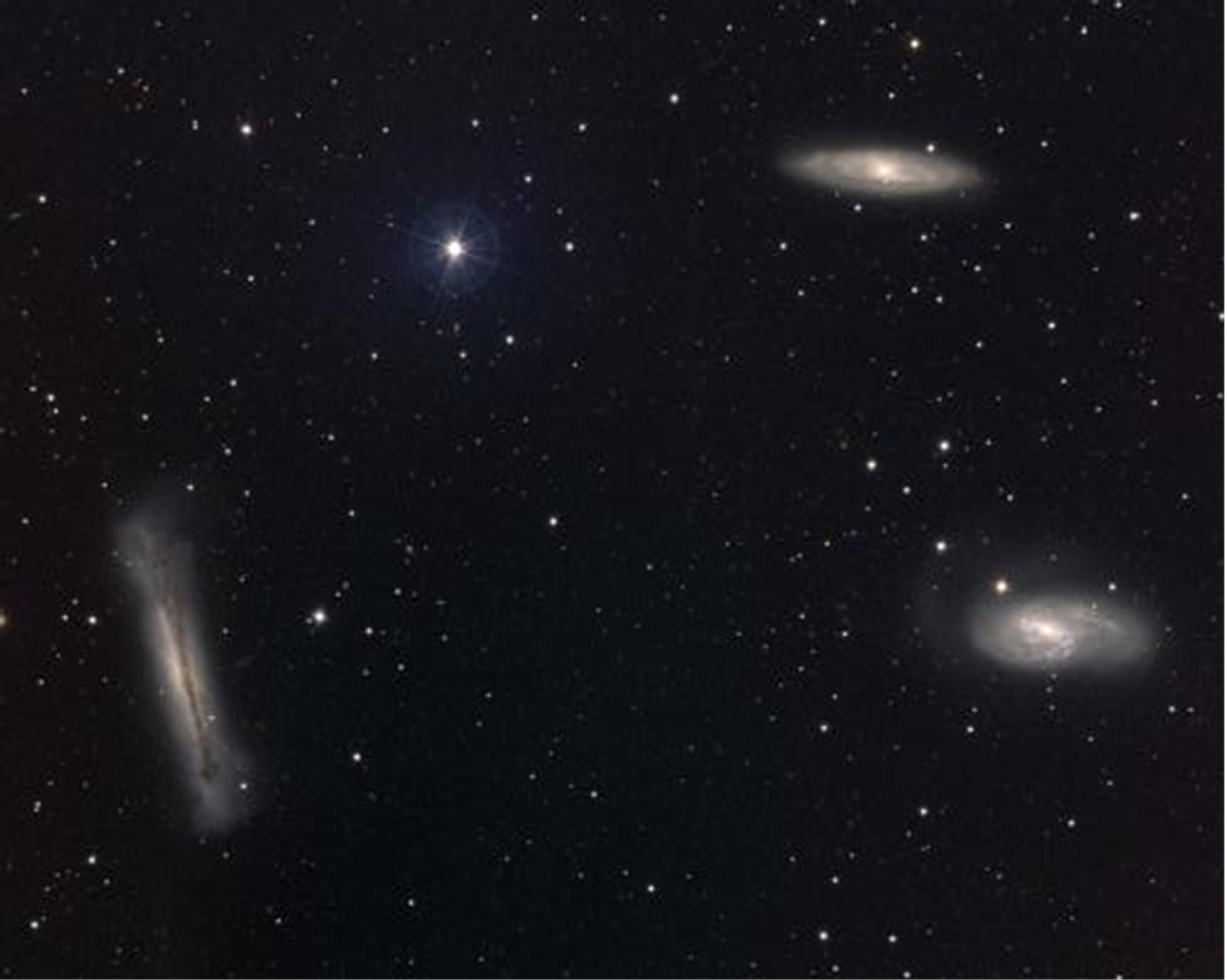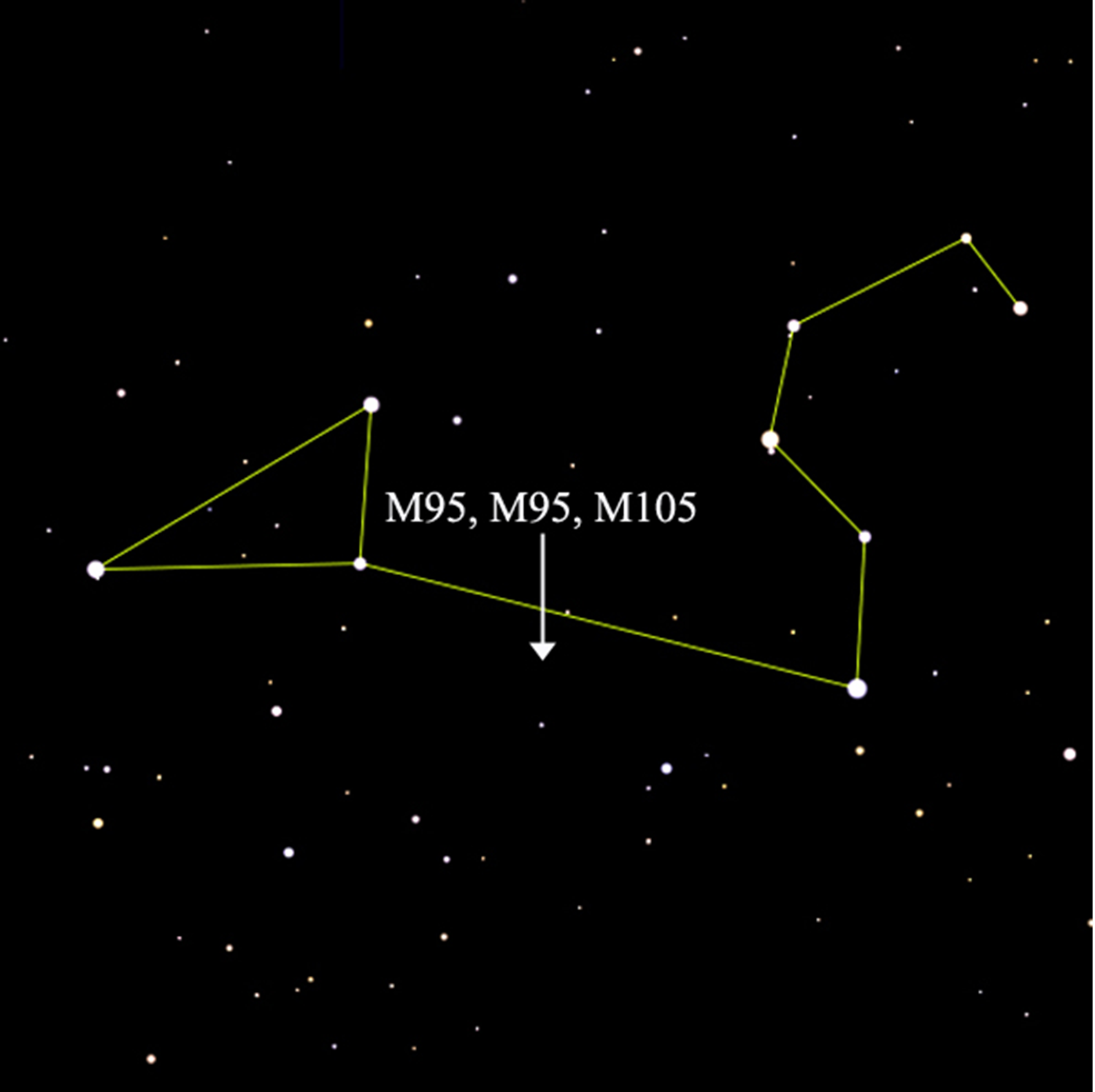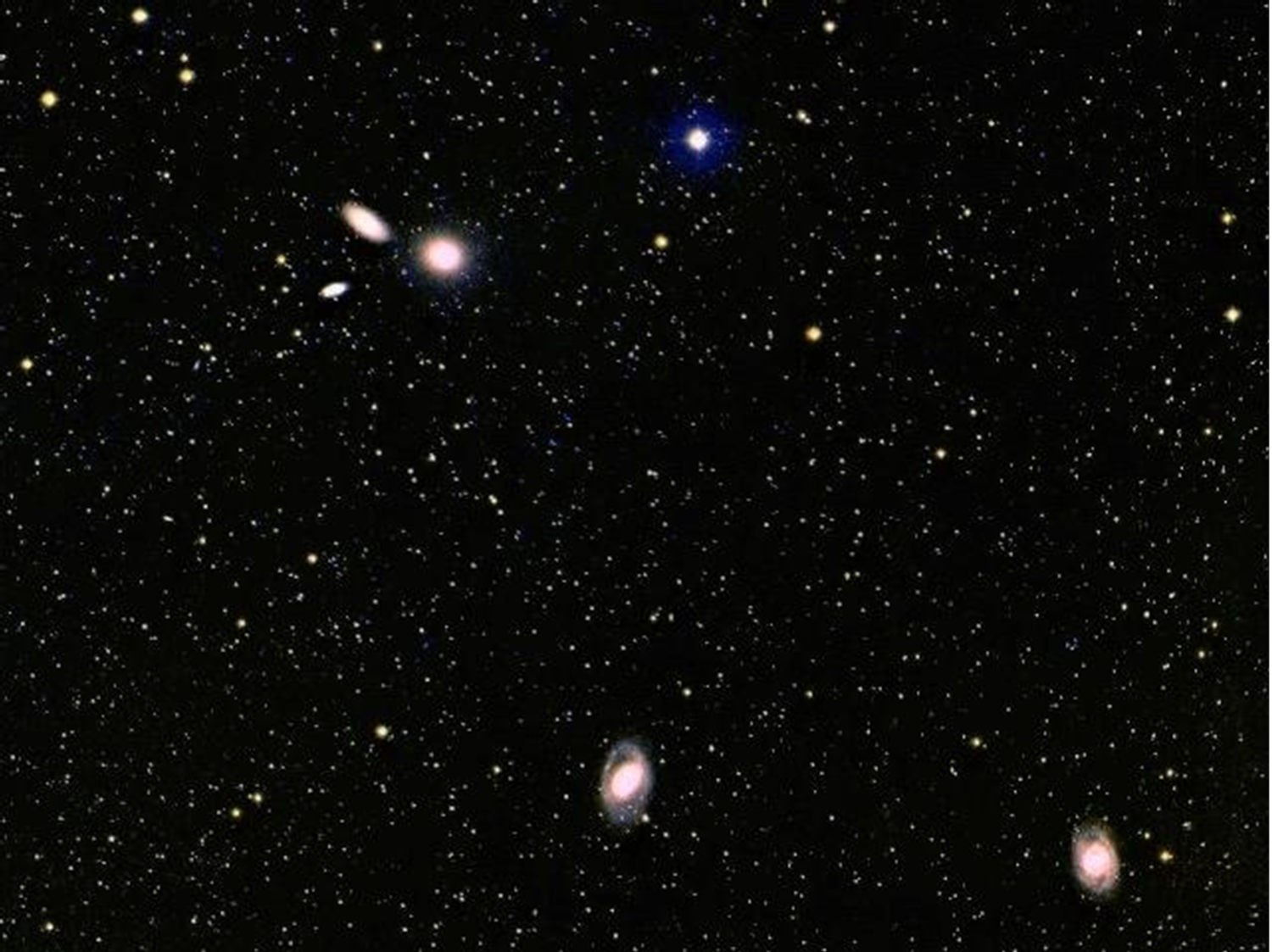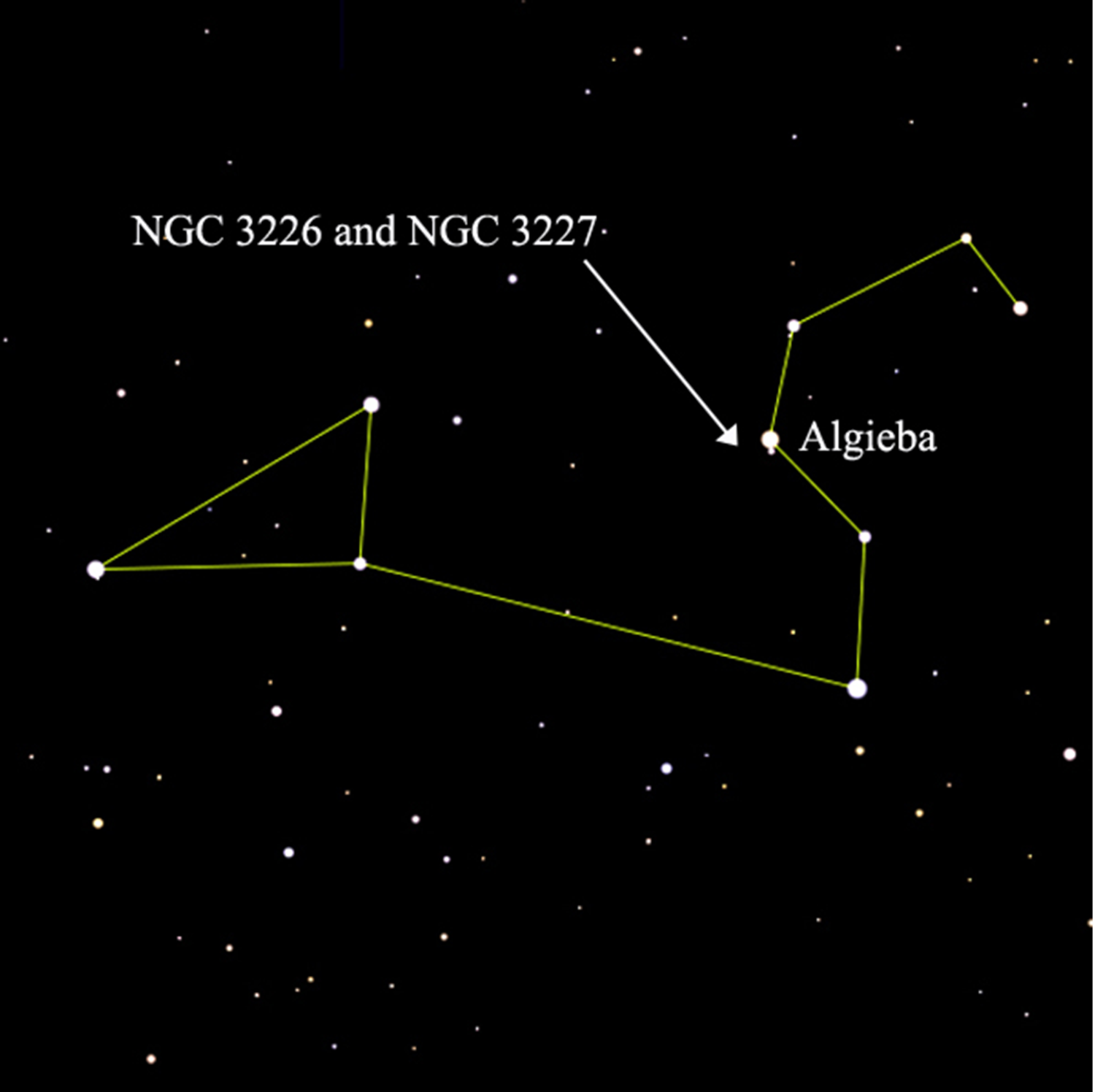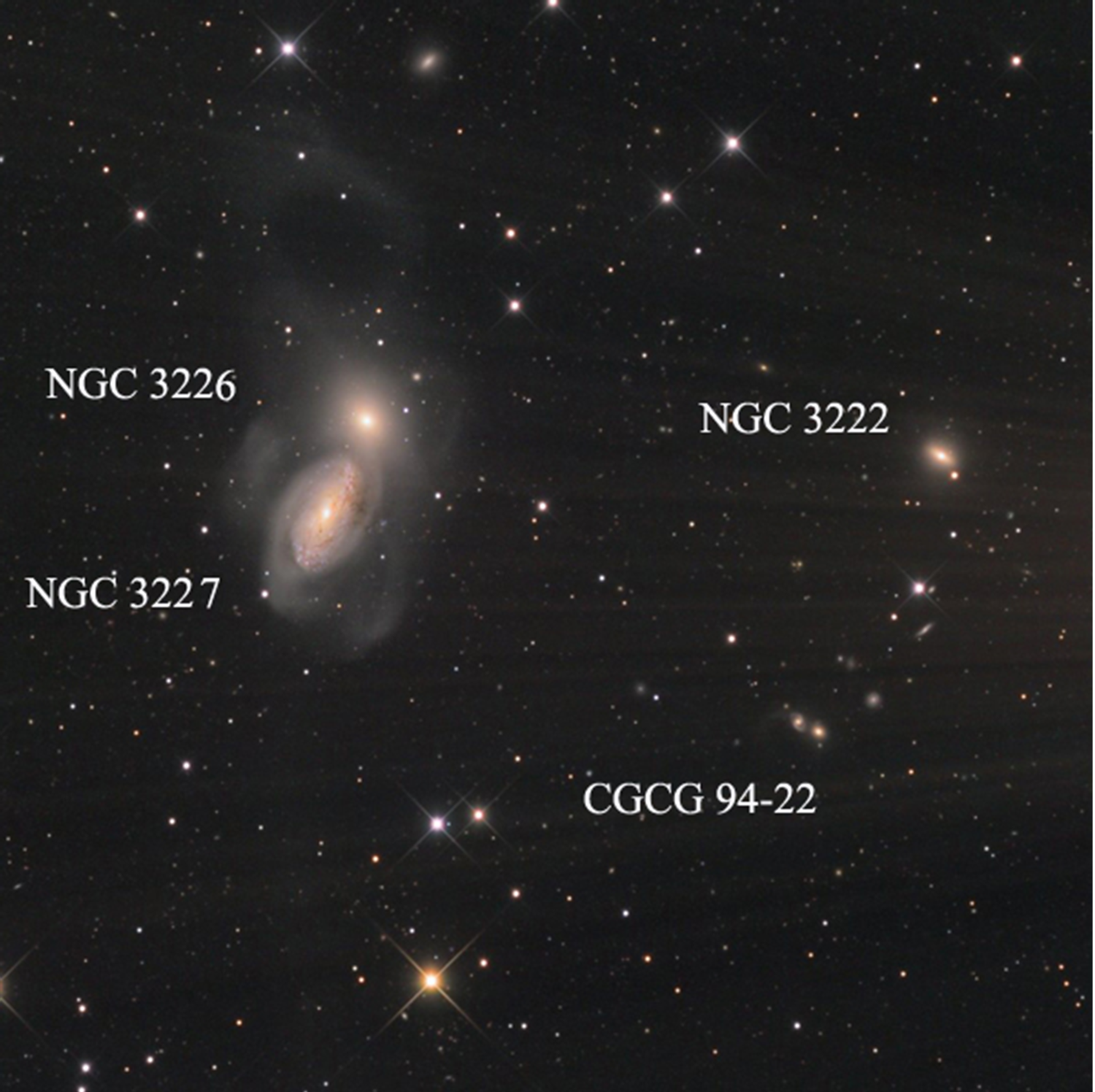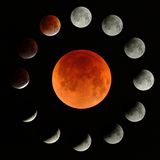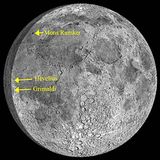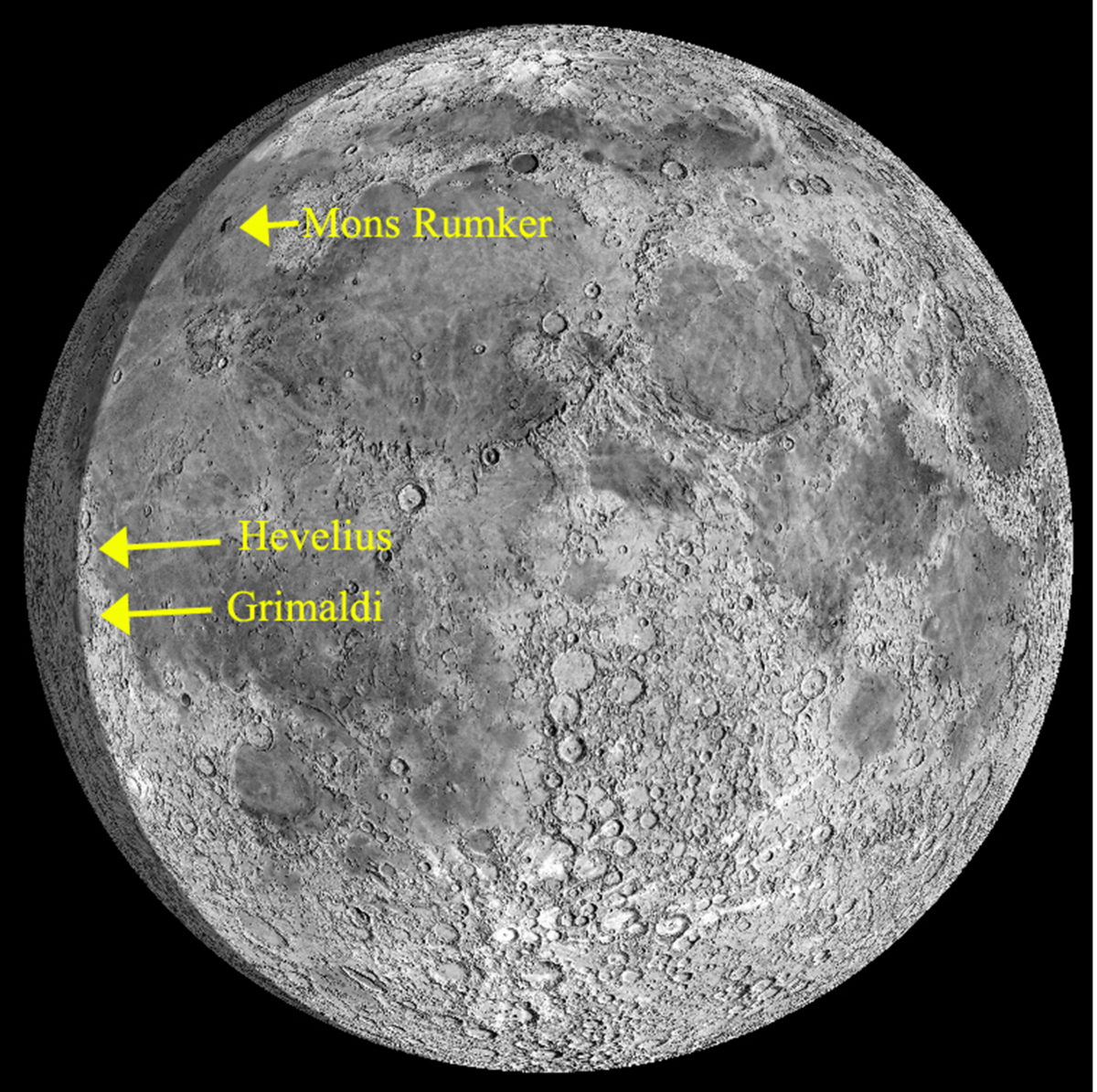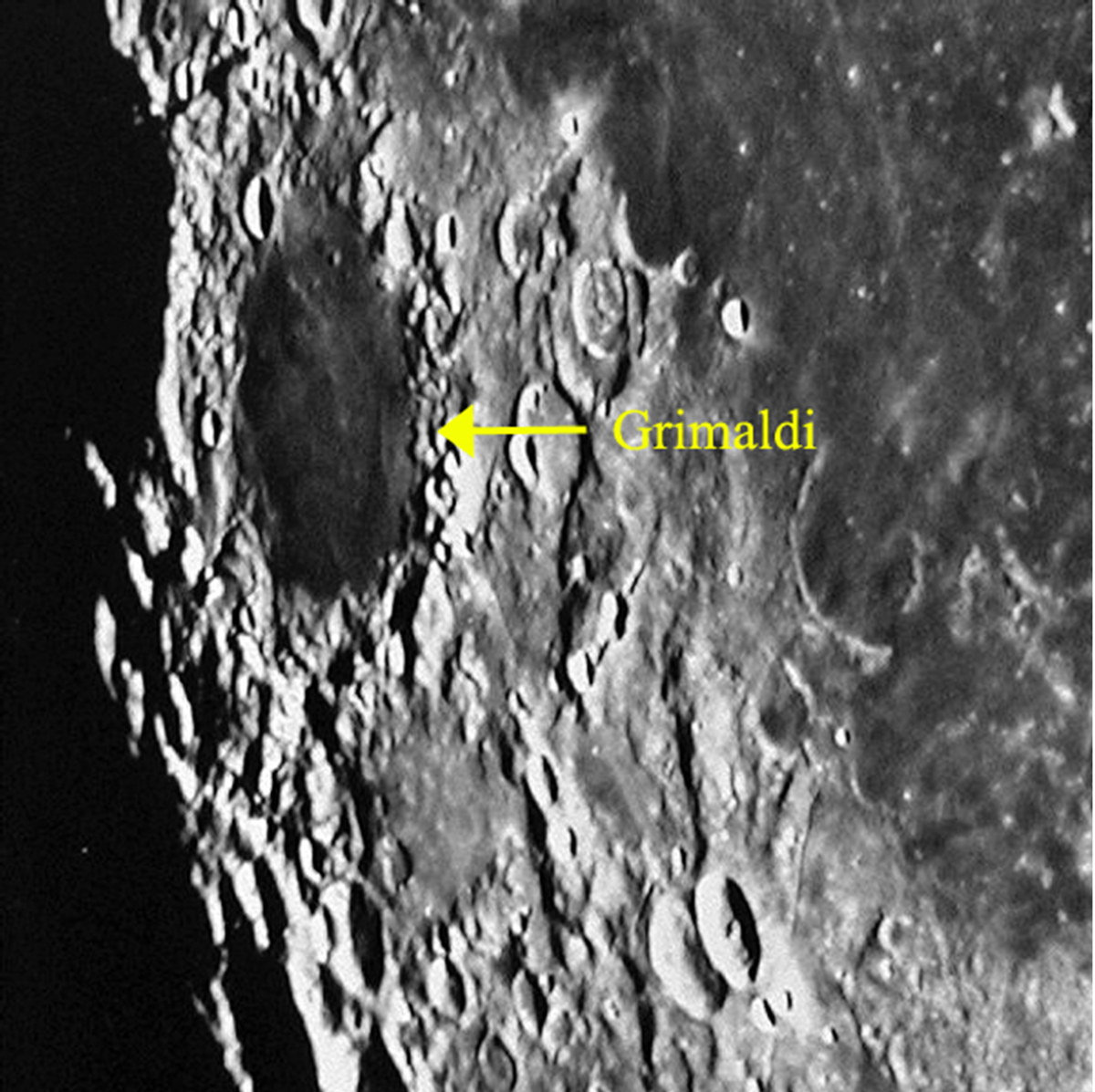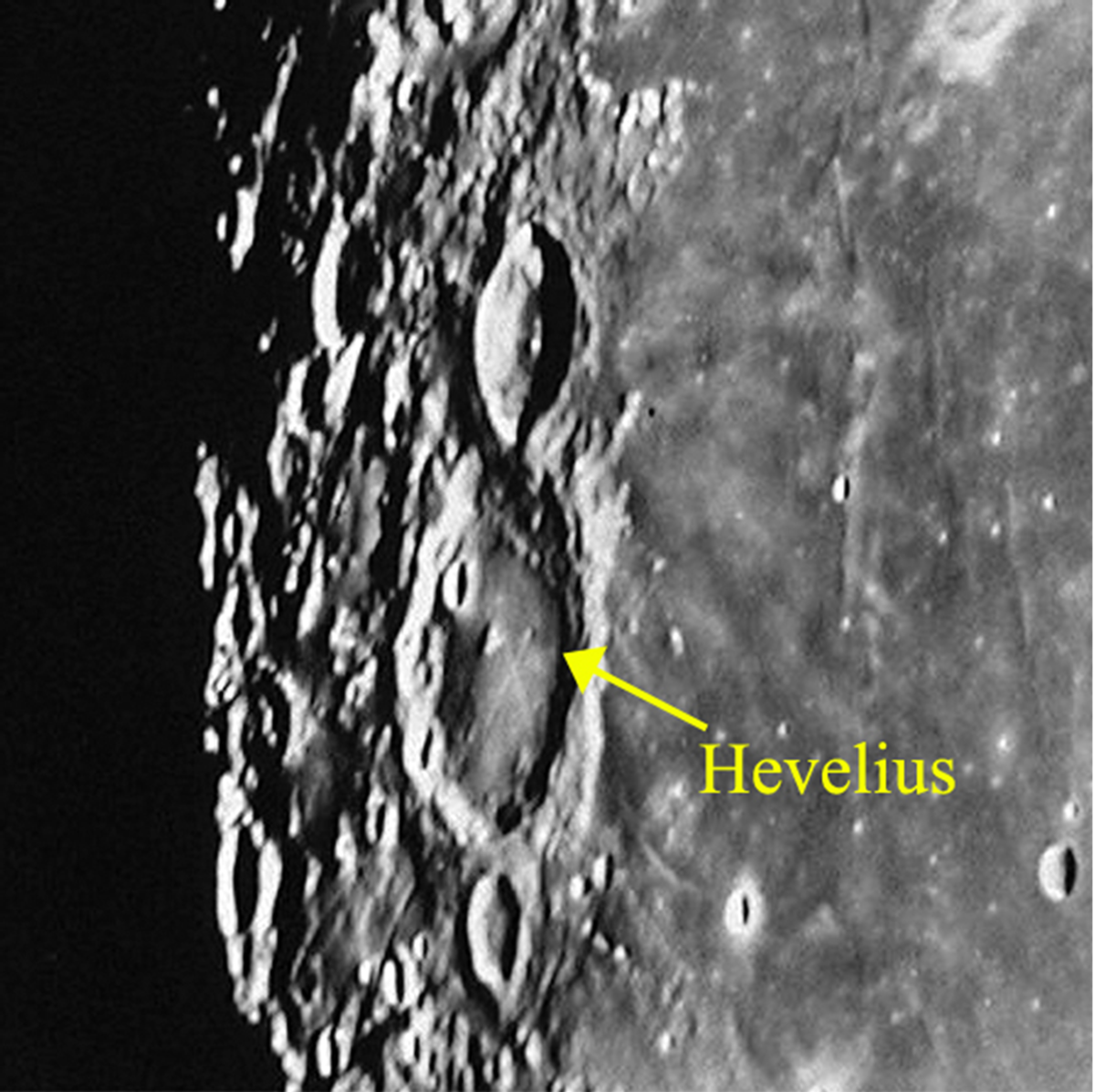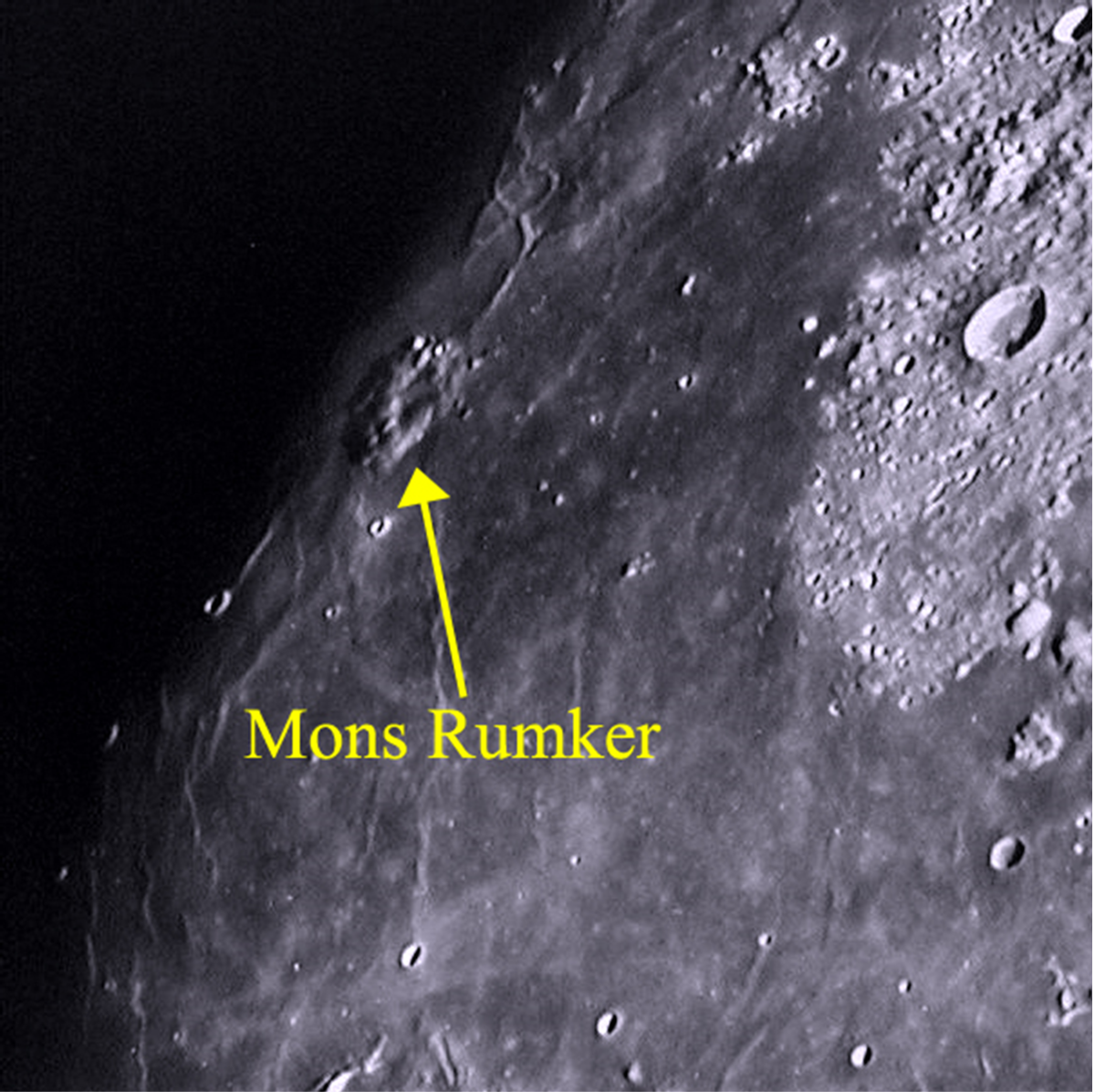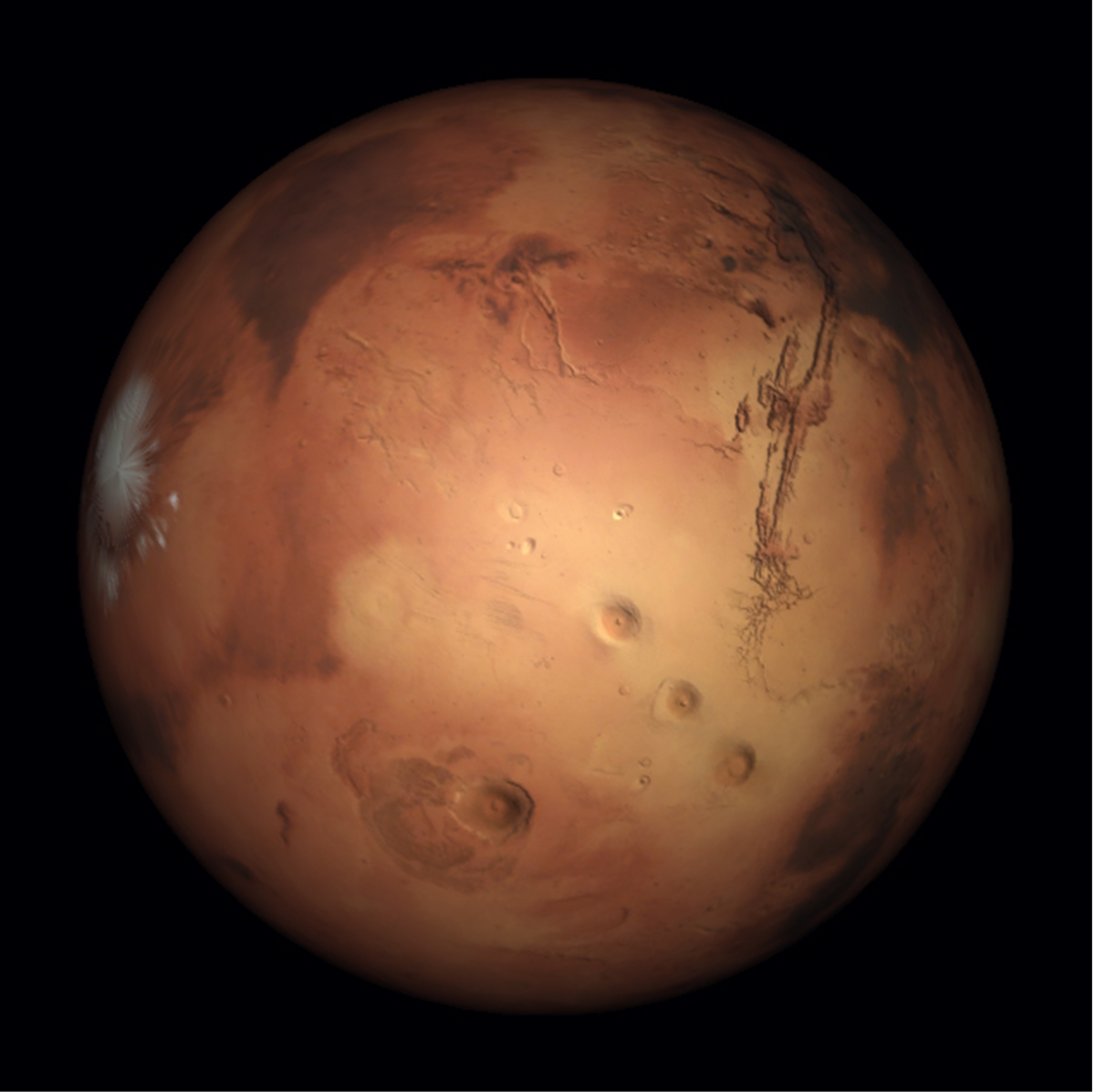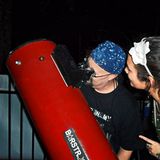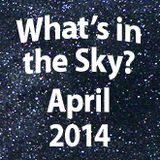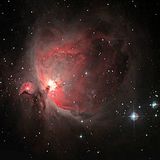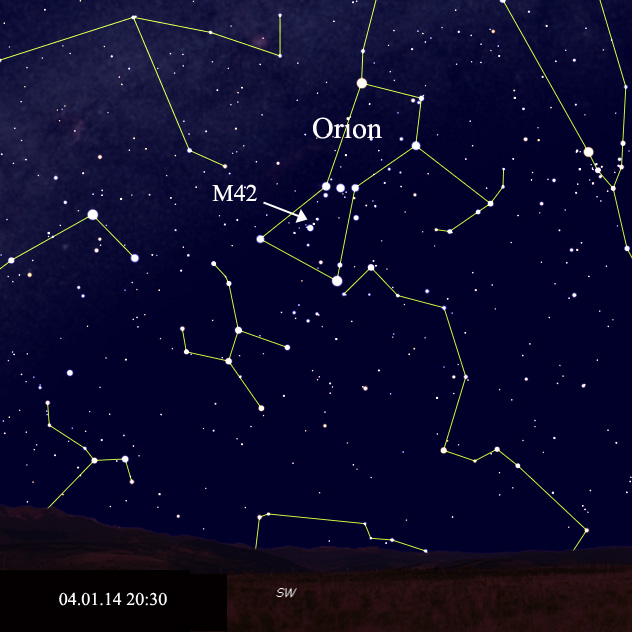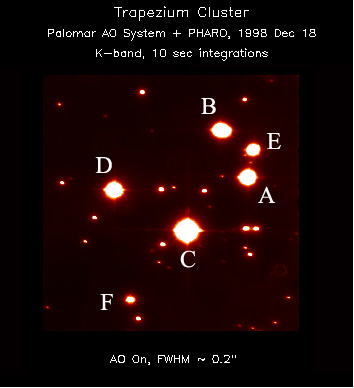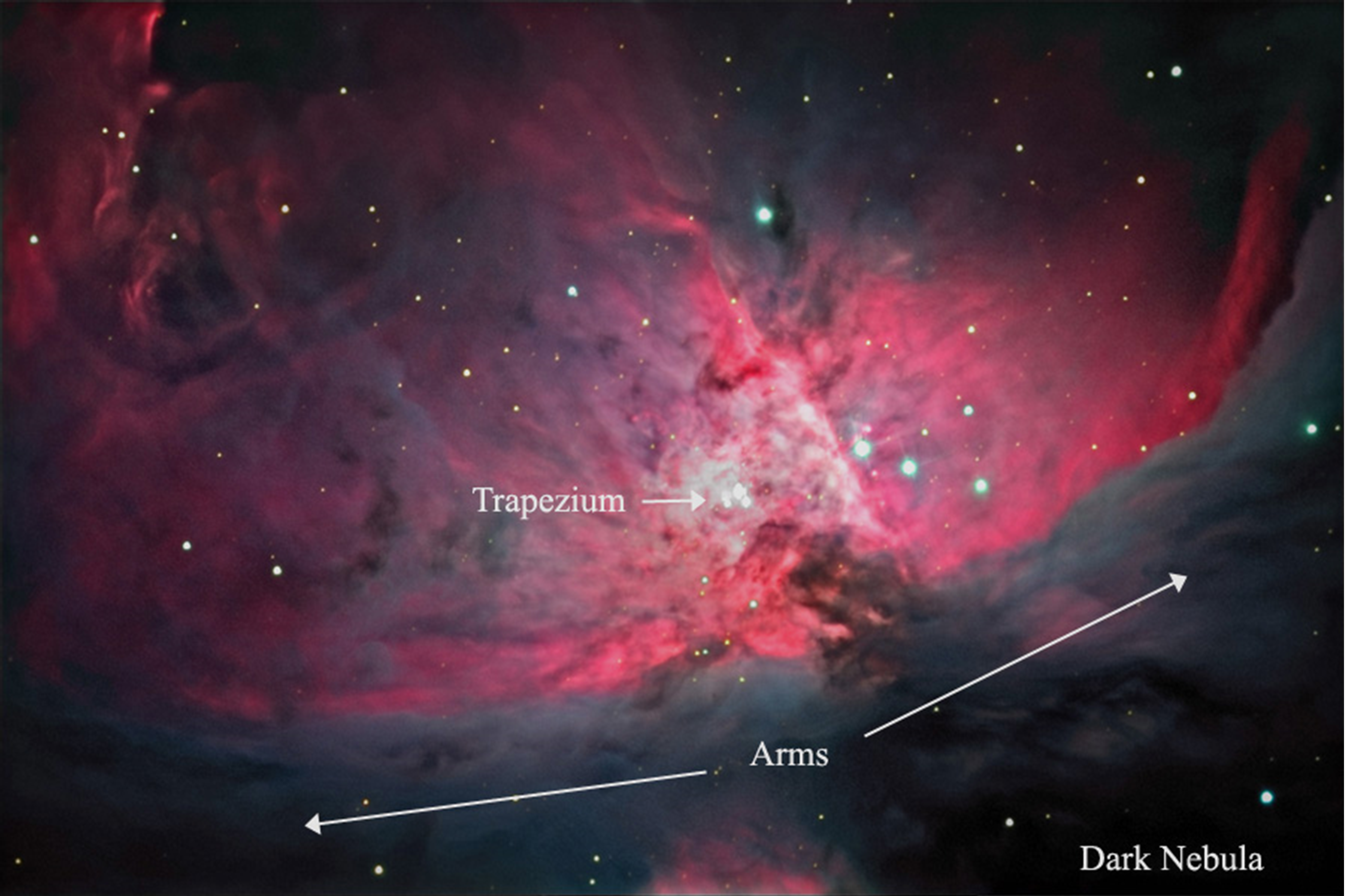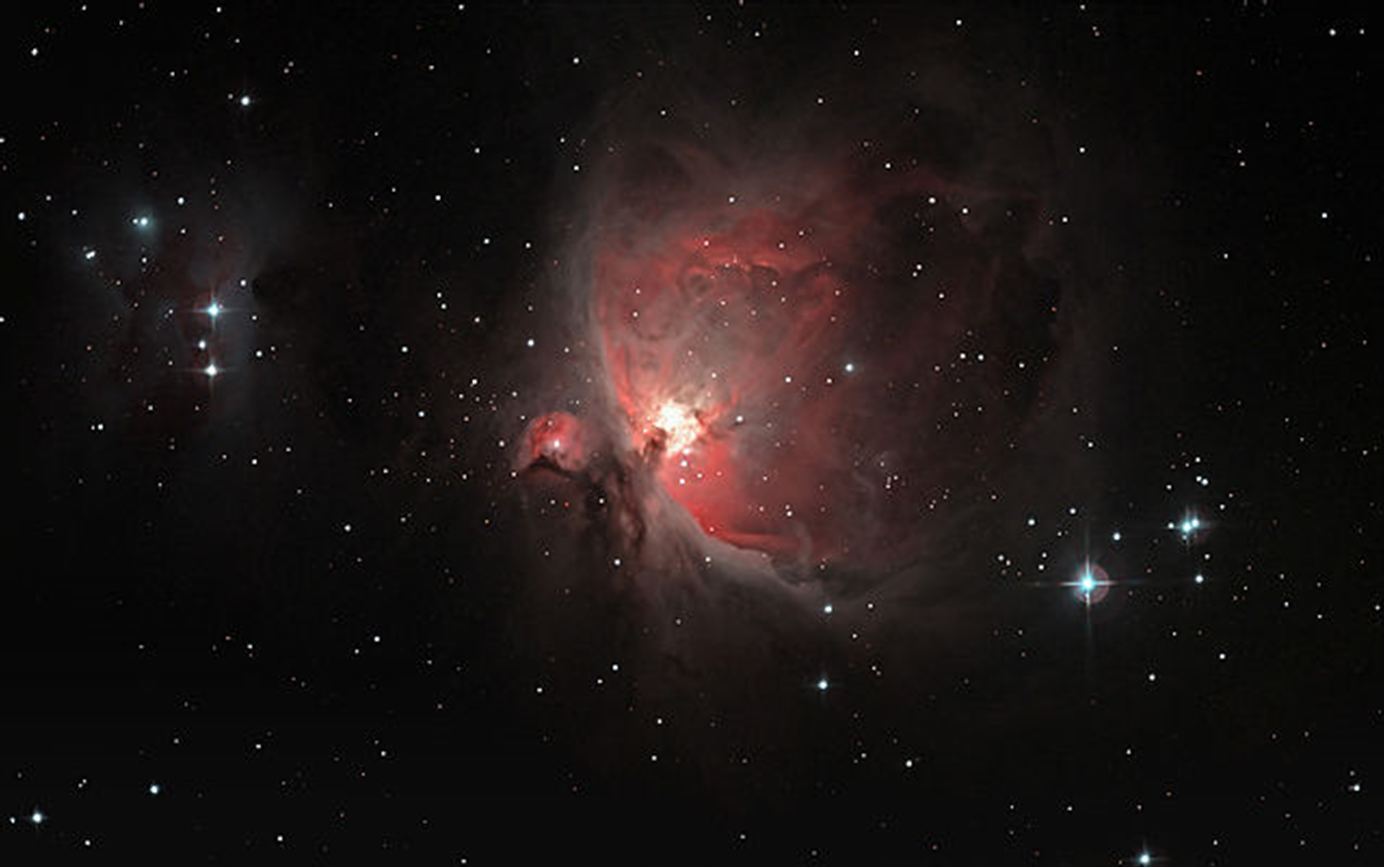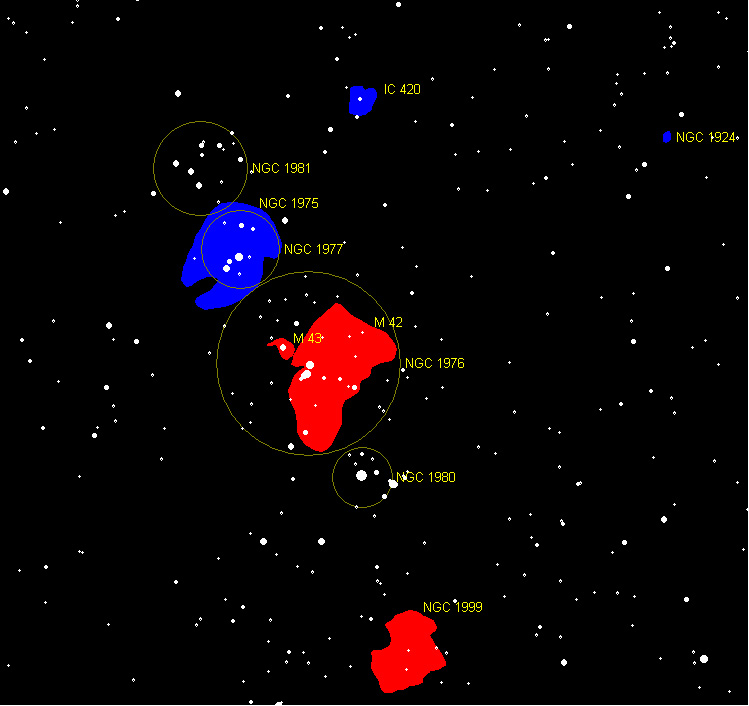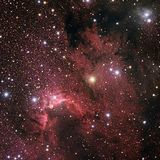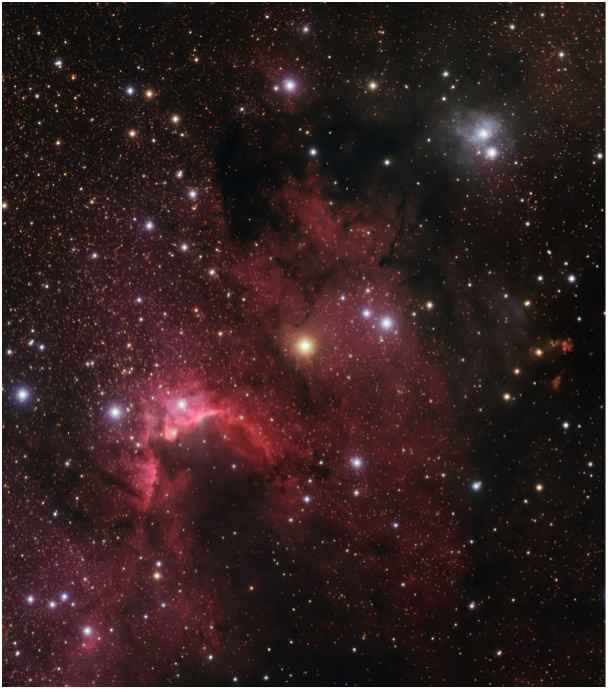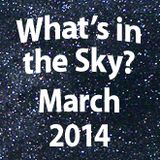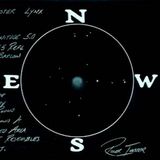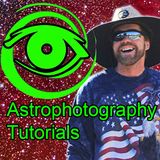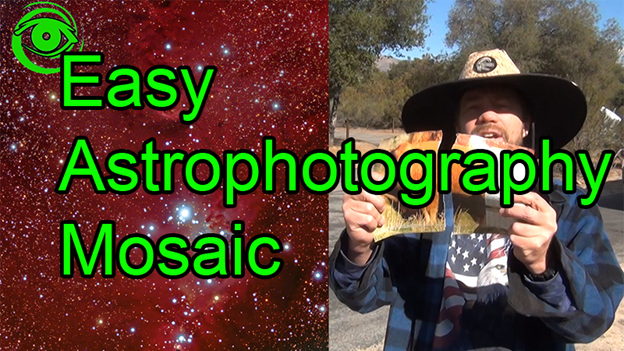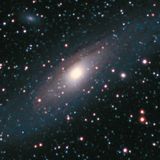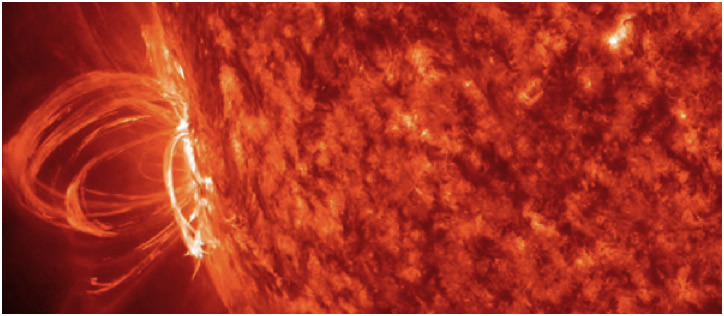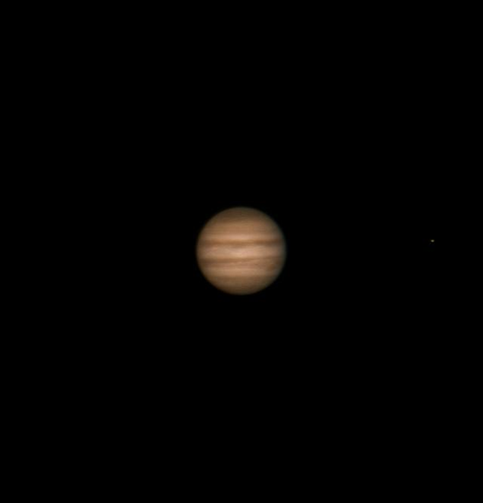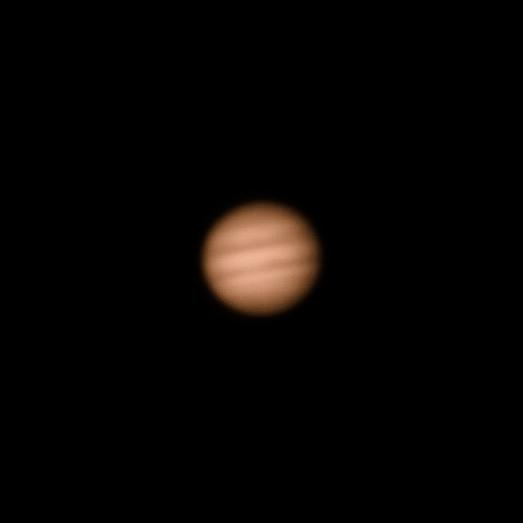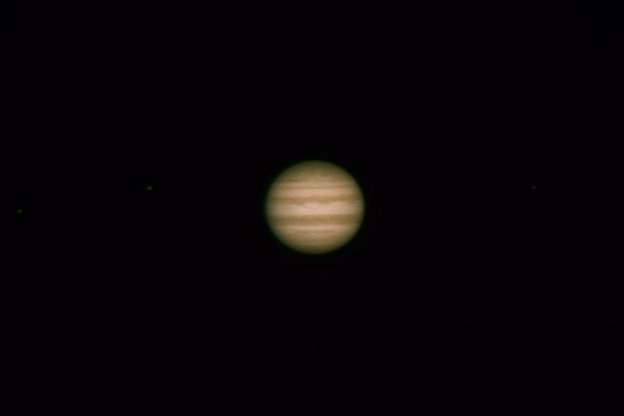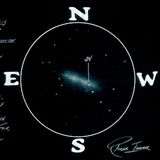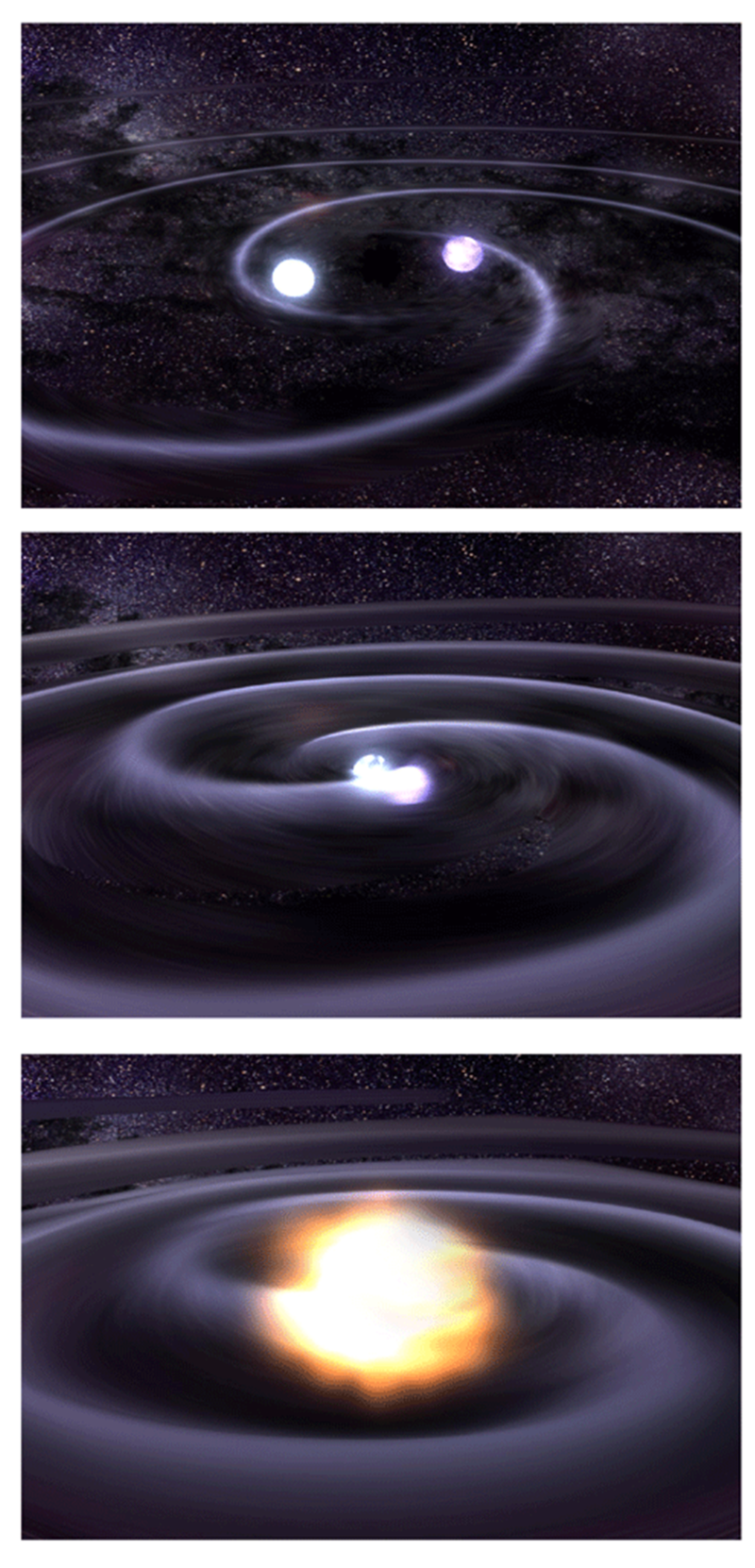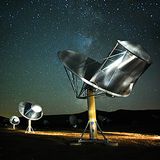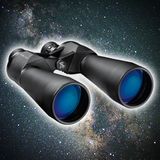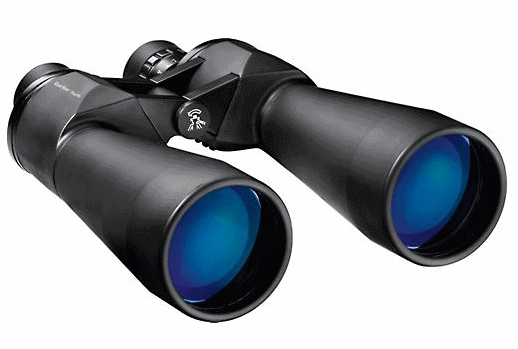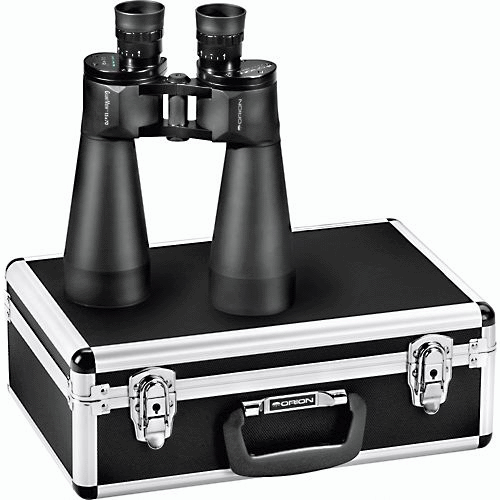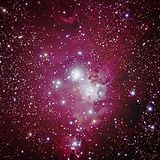- Telescopes
- Solar
- Mounts & Tripods
- Accessories
-
Astrophotography
- Sale Astrophotography
- New Astrophotography Products
- Astrophotography Kits
- Astrophotography Telescopes
- Astrophotography Cameras
- Astrophotography Solutions
- Autoguiding Solutions
- Astrophotography Accessories
- Camera Adapters & T-Rings
- Astrophotography Filters
- Focal Reducers and Field Flatteners
- Video Astrophotography
- Binoculars
- Sale
- Gift Center
- Shop by Brand
{"closeOnBackgroundClick":true,"bindings":{"bind0":{"fn":"function(){$.fnProxy(arguments,\'#headerOverlay\',OverlayWidget.show,\'OverlayWidget.show\');}","type":"quicklookselected","element":".ql-thumbnail .Quicklook .trigger"}},"effectOnShowSpeed":"1200","dragByBody":false,"dragByHandle":true,"effectOnHide":"fade","effectOnShow":"fade","cssSelector":"ql-thumbnail","effectOnHideSpeed":"1200","allowOffScreenOverlay":false,"effectOnShowOptions":"{}","effectOnHideOptions":"{}","widgetClass":"OverlayWidget","captureClicks":true,"onScreenPadding":10}
{"clickFunction":"function() {$(\'#_widget693528832003\').widgetClass().scrollPrevious(\'#_widget693528832003\');}","widgetClass":"ButtonWidget"}
{"clickFunction":"function() {$(\'#_widget693528832003\').widgetClass().scrollNext(\'#_widget693528832003\');}","widgetClass":"ButtonWidget"}
{"snapClosest":true,"bindings":{"bind0":{"fn":"function(event, pageNum) { PagedDataSetFilmstripLoaderWidget.loadPage(\'#recentlyViewed\', Math.floor(pageNum)); }","type":"scrollend","element":"#_widget693528832003_trigger"}},"unitSize":220,"widgetClass":"SnapToScrollerWidget","scrollSpeed":500,"scrollAmount":660,"afterScroll":"","animateScroll":"true","beforeScroll":"","direction":"vertical"}
{entityCount: 0}
{"emptyItemViewer":"<div class=\"image\"><!-- --></div>\n <div class=\"info\">\n <div class=\"name\"><!-- --></div>\n <div class=\"orionPrice\"><!-- --></div>\n </div>\n ","imageThreshold":3,"pages":2,"dataModel":{"imageWidth":90,"cacheEntitiesInRequest":false,"dataProviderWidget":"com.fry.ocpsdk.widget.catalog.dataproviders.RecentlyViewedDataProviderWidget","imageHeight":90,"itemViewerWidget":"com.fry.starter.widget.viewers.ItemViewerWidget","direction":"vertical"},"pageSize":3,"widgetClass":"PagedDataSetFilmstripLoaderWidget","loadThreshold":1,"direction":"vertical"}
{"showSinglePage":false,"totalItems":263,"defaultPageSize":20,"paging_next":"Next","paging_view_all":"View All 263 Items","paging_view_by_page":"View By Page","pageSize":20,"paging_previous":"Prev","currentIndex":80,"inactiveBuffer":2,"viewModeBeforePages":true,"persistentStorage":"true","showXofYLabel":false,"widgetClass":"CollapsingPagingWidget","activeBuffer":2,"triggerPageChanged":false,"defaultTotalItems":263}
A successful night of astronomy outreach requires a few crucial ingredients to ensure both an awesome viewing experience for your viewers, a minimal amount of hassle for you, and the most fun for everybody!
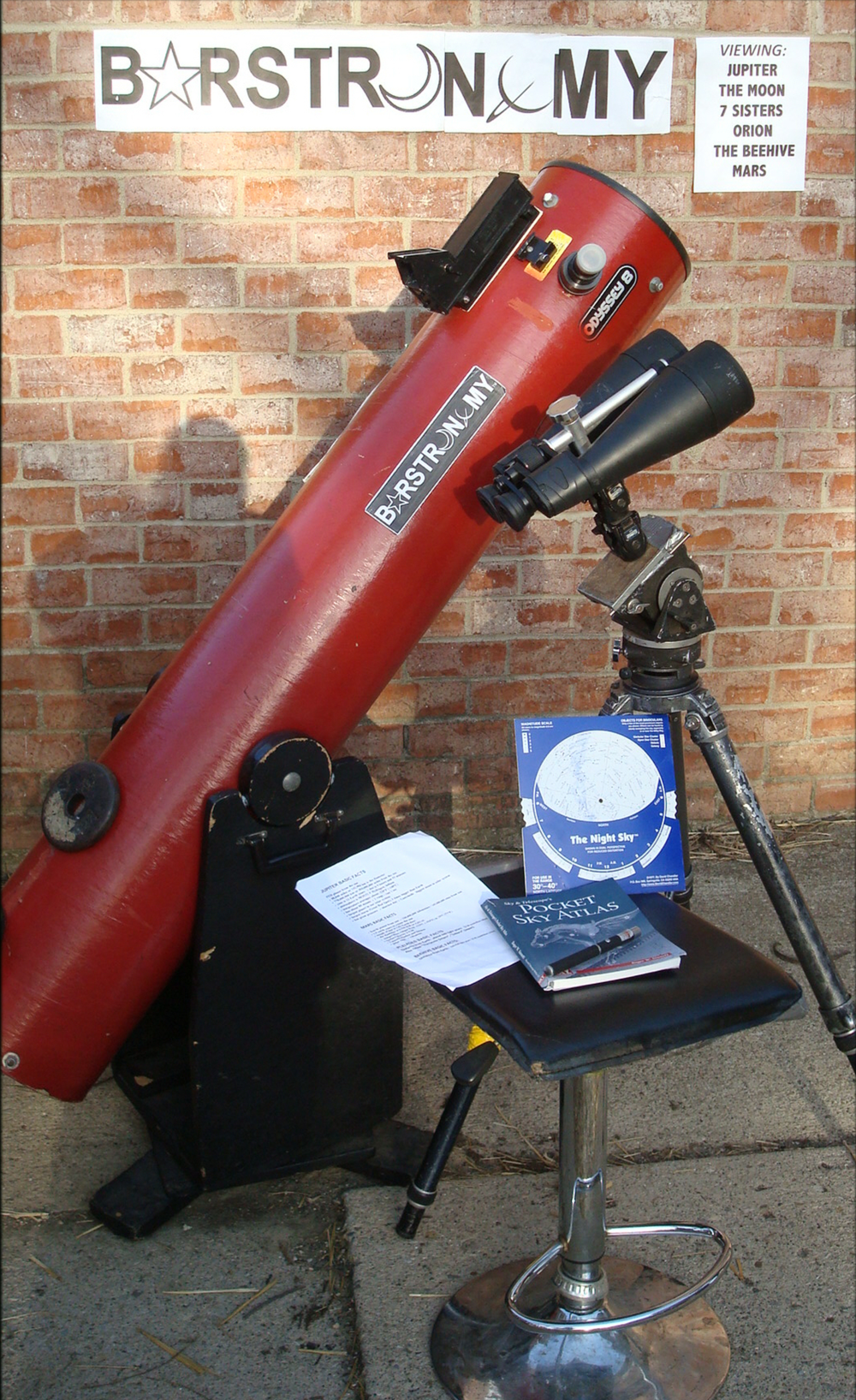
.
Here is a fantastic, tried-and-true list of what you'll need, compiled by Duke Skygawker, a professional astronomy outreach coordinator and founder of "Barstronomy" in Columbus, Ohio.
1. A scope you don't mind being manhandled:
A bare-bones 6" or 8" Dobsonian telescope works best, like an Orion 8" Classic Dob (or the old Coulter Odyssey 8 I use.) Just point and push. In bright areas, you'll only be looking at the brightest targets, almost all seen naked-eye (with a handful of exceptions). Let the viewer, with a little help, do aiming and tracking. Be prepared for fumbling on their part, but most pick it up quickly. Let your participants get their hands on the scope to help them get over the fear of "ruining expensive equipment." You'll teach them quickly that a decent largish scope is not that expensive or difficult to use!
2. An inexpensive wide field eyepiece or two:
Leave your high-end eyepieces (and worry) at home. When doing astronomy outreach, your EPs will be used roughly, guaranteed. I suggest something like a GSO Superwide 20mm, which gives a great view of the Moon and a decent view of Saturn and Jupiter. If you need to bump up power a little, use a superwide 15mm or 12mm. Not tack-sharp FOVs edge-to-edge, but the wide view is what counts. Orion Sirius Plossl eyepieces are a little bit more expensive, but offer great views. Use high powers not at all or sparingly - make it easy for your patrons to track the target.
3. A unity finder with a bullseye reticle:
No finder scopes. Use an Orion EZ Finder Deluxe II or the venerable Telrad. They love it because it's like aiming a big gun barrel and putting the bull's eye on the target!
4. Binoculars on a tripod:
I recommend using inexpensive astronomy binos - I use 20x80's. Whatever tripod you use, consider strapping it to a patio rail or other object if you can, just to deter accidents. Binoculars excel for the Moon with clouds passing in front, and larger star groupings like Orion's Sword or the Pleiades. Bonus: Everyone already knows how to use them, and finds they already have astronomy-appropriate optics at home in many cases. It also keeps people busy while they wait for views through the bigger scope.
5. Signage:
Especially if you are using a dobsonian telescope, some people won't know that cannon-shaped object is a telescope, since they have a mental image of traditional refractors. A large sign or banner tacked to the wall or fence, or even stuck on your telescope will clue them in. You can tell them it's a T-shirt cannon if you want; I like to say it's a "reverse photon cannon." Have a sign that tells what you're viewing. You can print these on 8x11 paper at home, but if you re-use them much, laminate them before use.
6. A small star atlas and a planisphere:
Inexpensive, useful, and easy to show people. You may not actually need them for finding targets at your event, but they are valuable examples of what to buy to be able to navigate the sky at home. The Orion Star Target is a good planisphere, and in my opinion, the S&T Pocket Sky Atlas is the best small atlas available.
7. An adjustable stool:
It's always more comfortable to sit and view, although some won't want to do so. I'm a huge fan of the common "Airlift" hydraulic bar stool for outreach events or for taking on dark-sky trips. Though it doesn't transport flat, it's lightweight, easy to pack around, and looks great, all for about forty bucks. Trust me, you'll LOVE it. If you don't sit on it, it's also a small table!
8. Knowledge:
Stored in your brain, or on a "cheat sheet" or card. In some cases (like solar H-alpha scopes, if daytime), a small sheet posted or handed out, explaining what people will see at the EP, can spare you repeated explanations, saving your voice and perhaps sanity. The planisphere and small star atlas you brought belong count in this category as well.
9. Appropriate attire:
No-brainer, right? Dress for your locale and event as well as the weather. If you're going to be bringing your telescope to a bluegrass festival, don't wear a tux, and don't wear a swimsuit to a wedding. Your star-studded beanie might not fit at a corporate mixer, but your knit-hat-with-built-in-dreads might be perfect at a reggae festival. And as an astronomer already, you already know to dress in layers for the expected low temperature, minus 20 degrees F or so.
10. A sense of humor and an even keel:
If you have fun, so will they. We all know a few astronomy jokes, but make them appropriate for the setting. "Your world is spinning" has applicability where adult beverages are offered. "Heavenly bodies our specialty" can be good for some crowds. "Nothing's stupider than Jupiter" just sounds funny, even though it's far from true. I've kept informal track of how quickly after beginning someone will make the standard joke about the seventh planet. Record: 17 seconds, and you may hear that multiple times in an evening. Grin and bear (not BARE) it! And, if it happens to be a night you find yourself in a foul mood, FAKE IT! You'll probably wind up having a good time anyway.
Orion suggests:
An eyepiece video camera is also a great tool for astronomy outreach, especially when you're dealing with large crowds. By projecting the eyepiece view onto a larger screen, more people will be able to see what's in the eyepiece without having to wait in line for their turn at the telescope. This is also an great tool to use when there are children present. Finally, at our last Star Party, many people were excited to be able to take pictures of the Moon with their cell phones. Having a SteadyPix adapter for cameras and smartphones really helped this process!
{ sourceURL:'/catalog/includes/quicklook_miniproduct.jsp?entityId=106887&entityTypeId=4', sourceSelector:'' }
After some 47 years of observing, Roger Ivester finally purchased an Orion 1.25" Correct-Image Star Telescope Diagonal for his Orion 102mm Refractor. The precision 90 degree diagonal is meant to deliver superior image fidelity, or a right-side-up, non-reversed image. Ivester, who observes visually and sketches through the eyepiece on a regular basis, was pleased with results. His full review is as follows:
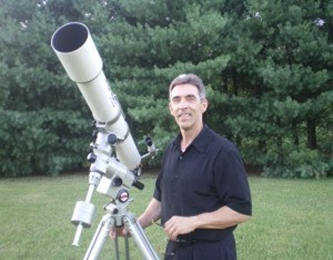
I love to observe with my 102mm refractor, but I don't like the reversed mirror image view presented, due to the 90 degree diagonal. On many occasions I choose my Newtonian, as it's so easy to make a correctly oriented pencil sketch. For many years, I've wanted to try a correct image 90 degree diagonal, but thought the views might suffer. I've been using a 96% enhanced reflectivity mirror diagonal for many years.
The reason I dislike making a sketch using a mirror image reversed view is that almost all published images and sketches are oriented scientifically correct with N at the top and W to the right. It's also very easy to confuse the cardinal points with a standard view diagonal, when making a sketch or noting a faint feature of the object being observed.
One thing I should mention. A correct image prism diagonal such as this Orion, also known as an Amici: When observing a very bright star with any correct image diagonal will show a very thin thread of light crossing from edge to edge. This is not a defect, but is inherent to this type of diagonal. I only noticed it when observing Sirius, and found it not to be objectionable. I purchased this diagonal, not to observe the brightest of stars, but to observe the faintest of deep-sky objects possible with a 102 mm refractor.
I plan on much more observing, notes and sketching with my trusty 17-year-old Orion 102mm refractor. Again...I love a correct image view, and sketching with my refractor will never be the same again. I'm very happy with my new purchase.
While looking through the Orion Telescopes & Binoculars catalog last week, I noticed a 1.25-inch, correct image diagonal. After many years of wondering how this type of diagonal would perform, I picked up the phone and ordered one. After all, Orion has a fabulous return policy, should it not meet my satisfaction. I had nothing to lose...
Within just a few days, my diagonal arrived. I could hardly wait to give it a try. On March 5th, 2014, I set up my Orion 102mm refractor for the big test. I started with a very high magnification of 200x, to examine the Trapezium stars and see how the view would compare with my current enhanced mirror diagonal. The stars were beautiful in both, and even the "E" star could be glimpsed. First test: passed. I then went to my favorite galaxy pair, M81 and M82 at 57x. I immediately loved the non-reversed and correct image view of these two beautiful galaxies using my new diagonal. I really couldn't see any difference between the qualities of view. The next test would be Jupiter, and again both diagonals presented fabulous views. The cloud bands appeared very sharp with an incredible amount of detail visible.
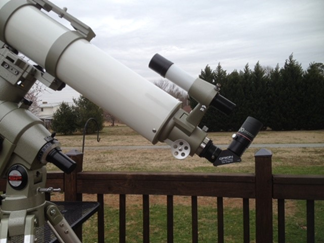
It is my opinion, the correct-image Orion image diagonal, catalog #8787 seemingly passed all tests with flying colors. At this point, I put my beautiful enhanced solid aluminum mirror image diagonal in my eyepiece box, where it will probably stay. For the remainder of the evening I enjoyed using only my new "correct image" diagonal.
I can hardly wait to start sketching with my new refractor accessory. I just wish that I had made this purchase many years ago.
Read more of Roger's astronomy blogs and see his sketches at www.rogerivester.com.
{ sourceURL:'/catalog/includes/quicklook_miniproduct.jsp?entityId=106656&entityTypeId=4', sourceSelector:'' }
As spring begins, Leo is transiting due south in the early evenings, and presents us with some interesting bright, and not so bright, galaxy groupings. These can, for the most part, be viewed from a reasonably dark sky, in instruments as small as four inches. Of course, some will require larger optics, but that should serve to interest you in joining other amateur astronomers observing, getting away from light polluted skies, and seeing just what there is to see. Let's begin.
The image above shows our early April sky, two hours after sunset. Looking mostly south-southeast, you'll find bright star Spica in Virgo. Above it to the south is the constellation Leo, marked by its brighest start, Regulus, which anchors the Sickle asterism. In The Sickle is the fine double star Algieba. Leo's back haunches are punctuated by the star Denobola. We will use these stars to locate three galaxy groups.
M66 is the brightest at magnitude 8.9, 36 million light years from us. M65 shines at magnitude 10.25, and along with NGC 3628 is 35 million light years from us. The three are gravitationally bound - as evidenced by their proximity to each other and distance from us. NGC 3628 is a challenge object at magnitude 10.26, appearing dimmer due to its large angular size - and to my tastes the most interesting due to its distorted appearance.
In deep images of the group, NGC 3628 shows a tidal tail about 300,000 light years in length. This is material streaming out of the galaxy as it moves through space, presumably the result of gravitational interaction with the two other members of the group. Here are images of the three together, courtesy of NOAO:
Can you tell which is which based on what you've read, and why NGC 3628 has been nicknamed "The Hamburger"?
Let's move to the next group in Leo - M95, M96 and M105.
Located just below and a bit over two-thirds along a line described from Regulus and the star used to hop down to the Leo Trio, this group of three galaxies - M105, M95 and M96 (the M96 group) is visible in a single binocular field of view.
All three galaxies are in the 10th magnitude range, varying in distance from 31 million to 36 million light years from us. The group also includes a few dimmer members surrounding M105. M95 and M96 were discovered by Charles Messier's protégé, Pierre Méchain, in 1781. M105 was added to the Messier catalog by Helen S. Hoag, after she found reference to it in a letter from Méchain referencing it. Here is how they look in a single image:
M95 is at the lower right, with M96 to its left. M105 is the roundish glow upper left, and nearly as bright is NGC 3384 - the elongated glow to its left. NGC 3389 will be the challenge object of the group, significantly dimmer at mag 12.4. The Messier members of this group will all be visible in a 4 inch telescope, as I expect NGC 3384 will be as well. NGC 3389 has been reported visible in a six inch telescope - maybe you'll give it a try in something smaller and let me know if you find it. Image is courtesy SEDS, Arizona.
The third grouping is an esoteric one. NGC 3226 and NGC 3227 are a pair of brighter galaxies with dimmer ones in the same field of view. The brighter pair are part of astronomer Halton Arp's Atlas of Peculiar Galaxies. NGC 3226 is a dwarf galaxy, paired and interacting with the spiral galaxy NGC 3227. These are very easy to find - next to the beautiful double star Algieba (Gamma Leonis), which you should pay a visit to on your way to these galaxies.
Here is how the pairing appears, although it will not appear photographic in your telescope like this image:
I've read one report of viewing the brighter pair in a 102mm telescope, but all other reports are in 8 inch or lager instruments. NGC 3227 is almost 66 million light years distant, and shines at magnitude 11.28. NGC 3226 is 70 million light years from us, shining at magnitude 12.3. If you can pick up those two, try for NGC 3222 - dim at mag 13.7, and an amazing 232 million light years away.
Want more? Here's the tough one: CGCG 94-22 (Catalog of Galaxies and Galaxy Clusters) is a tiny speck, a multiple galaxy system, shining at magnitude 15.4. This pair of galaxies is 595 million light years from us! Thanks to Bob Frankel for this beautiful image showing the tidal interaction between the large galaxies, and even hints of such in the tiny pair. You can easily see the "dance" the galaxies have been doing together by the trails of material around them. If you're wondering what the rays are from the right side of the image, it's the brilliant double star Algieba. Here is the original image on Bob's website.
I'm eager to hear from some of you who try hunting for any or all of these targets. The brightest members offer quite a bit of detail. I personally love The Hamburger, as it is visible without much work, and is an unusual target. The dimmer stuff? well, icing on the celestial cake.
Going galaxy hunting in Leo? Come back and leave a review of this article, and let us know what you used to find them, and which was your favorite.
Clear skies,
Mark
{ sourceURL:'/catalog/includes/quicklook_miniproduct.jsp?entityId=106763&entityTypeId=4', sourceSelector:'' }
During the totality phase of a total lunar eclipse, the Moon is completely immersed in Earth's shadow. If you were lucky enough to be standing on the Moon during totality, the Earth would be completely dark, with a ring of sunshine around it. "And this brilliant ring would be bright enough to dimly light up the lunar landscape," says Alan MacRobert of Sky and Telescope magazine.
But, we're not on the Moon, at least at the time of writing this. And from Earth, what we see during a total lunar eclipse is a little less predictable, which kind of makes the whole thing even more exciting, and worth staying awake for.
While mainstream media usually buzzes with the promise of a "Blood Moon" before a total lunar eclipse, Michael E. Bakich, of Astronomy magazine is a little more real about it: the Moon's appearance during totality can vary greatly from one eclipse to the next, he says.
So while we all hope for a bright red Moon ? the result of shorter blue rays of light being scattered from the Sun rays which bend through our atmosphere and across the Moon's shadowed surface ? it's only one of several different possible outcomes. Variables that affect the Moon's appearance include the path the Moon takes through the Earth's umbra, which is not always completely centered, and the state of the Earth's atmosphere, which contains water droplets and solid particles like dust and ash, which reduce the air's transparency, says Bakich.
"A significant volcanic eruption before a lunar eclipse can darkest the Moon's face considerably by pumping our atmosphere full of particles that halt light. Lots of clouds along the edge of our planet also can cut down the light," writes Bakich in the April 2014 issue of Astronomy. You can see an example of this by googling pictures of the total lunar eclipse of December 9, 1992, which occurred just months after Mount Pinatubo blew in the Philippines.
In the time leading up to a total lunar eclipse, all we can do really is make a few predictions, get our telescopes, binoculars, cameras, and eyeballs ready, and wait. Bring your observing notebook outside too, so you can take notes about the characteristics of this particular eclipse.
How to Estimate the Luminosity of a Total Lunar Eclipse:
In 1921, the French astronomer André-Louis Danjon created a five-point scale for estimating the darkness of a total lunar eclipse. The L value stands for various luminosities, starting with the darkest. Below is a chart of Danjon's system, as explained by Bakich:
| L Value | Moon's Appearance |
|---|---|
| L=0 | A very dark eclipse. The Moon is almost invisible at mid-totality. |
| L=1 | Dark, with gray or brownish coloration and details are distinguishable only with difficulty. |
| L=2 | The Moon appears deep red or rust colored; the central shadow is quite dark while the umbra's outer edge is relatively bright. |
| L=3 | The Moon appears brick red; the umbral shadow often has a bright or yellow rim. |
| L=4 | The Moon appears bright copper-red, or orange, and the umbral shadow has a bright bluish rim. |
"In evaluating L, you should record both the instrument you used (if any) and the time," says Bakich. "Also document any variations in the color and brightness of different parts of the shadow, as well as the sharpness of its edge. Pay attention to the visibility of lunar features within the umbra. Notes and sketches made during the eclipse will help you recall details later."
As far as estimating the darkness and color a total lunar eclipse, Bakich recommends notes as opposed to images, since cameras typically record more than the eye can see, and often vary.
{ sourceURL:'/catalog/includes/quicklook_miniproduct.jsp?entityId=106726&entityTypeId=4', sourceSelector:'' }
The Full Moon of April falls on the 15th of the month. As we look forward to the total lunar eclipse on the night of the 14th-15th, let's observe the Moon before it's completely full. After all, the best time to observe the Moon is when there is still a line of shadow falling across it. On Saturday, April 12, the Moon is waxing gibbous at 12.68 days old, and 95% illuminated.
The Moon is ever changing, and even the special features we tend to visit over and over take on new and interesting appearances, as the shadow line, named the Terminator, moves minute by minute. Here is our Moon as of Saturday, with a few interesting targets identified for you to observe:
Below are detailed images and description of those areas. These are fun to view in a telescope under good conditions. I've heard people say the view feels like flying over the lunar surface!
Grimaldi is visible in 10 power binoculars. It is a very dark circular formation, appearing much like a sea, or Mare. You may see a number of small craters on its very flat and smooth floor, Grimaldi also has very high slopes, with pock-marked craters embedded in them. This is a great time to pick out details.
Hevelius is very close to Grimaldi, and forms a nice pair with Cavalerius just above it in this image. This crater too has steep slopes embedded with many small craters. The floor has a small central peak. See the cross-marks near the central peak? Those are part of Rimae Hevelius, rilles that criss-cross the floor. The main crater can give pleasing views in a 10 power binocular, but for details such as the rilles, you'll need something more like a 12" telescope.
Mons Rumker can be viewed in an instrument as small as a 50mm refractor, and is a pleasant surprise among lunar targets. It is described as a tortured area of lunar domes forming a circle, and showing steep slopes. I think it is an anomaly among lunar features. In the large Sinus Roris (Bay of Dew) surrounding it, you'll find other small isolated lunar domes as well ejecta rays from ancient impacts splayed across the surface.>
There is so much to explore on the Moon, and following the Terminator makes it all the more enjoyable, since it is the area of highest contrast between shadow and light. The features really pop out in 3D.
On tonight's map at the start of this article, I point out Porrima - Gamma Virginis. This is a wonderfully tight double star. During my years observing, it has gone from a 2.5 arc-second separation (1995) to 0.4 arc-second in 2008. In 2010 it was back to 0.9 arc-seconds and now is back to over 2 arc-seconds, and significantly easier. You can "split" this double star now in a 50mm telescope. It is a true binary star, where both members are bound together by gravity, shining individually at magnitudes 3.6 and 3.5. They shine at a combined magnitude 2.6, 39 light years distant, and have an orbital period (around their common center of gravity) of 169 years.
Gamma Virginis is a star you'll enjoy watching year after year - as you can watch the changes in separation.
Finally, here is an image from Starry Night Pro, of what Mars will look like tonight:
I considered describing its features (I love the Tharsis Montes craters lower right!) - but instead will refer you to the Mars Observing Guide already written on the Orion website, delineating the various features you should try to see.
Tonight is a great time to observe Mars, which is at its brightest. The good news is, even tonight's big Moon won't interfere with your views. Get your scope, family and friends out, because tonight is an observing delight!
Please leave a review on this article, and let me know what you observed in your telescope, and what features you were able to see.
Clear skies,
Mark Wagner
Images courtesy the Lunar and Planetary Institute From The Consolidated Lunar Atlas. Mars image from Starry Night Pro.
{ sourceURL:'/catalog/includes/quicklook_miniproduct.jsp?entityId=106722&entityTypeId=4', sourceSelector:'' }
Duke Skygawker of Barstronomy writes about the public outreach he does with his dobsonian telescope 'Big Red' in the middle of Columbus, Ohio.
It's called Barstronomy because that's where it mostly takes place; at taverns and music venues with an outdoor area, in the middle of the city in Columbus, Ohio. It began in my neighborhood at Woodlands Tavern, where I'd been a frequent attendee and sometime performer at their Wednesday Open Mic. It began with a dare.
While at Woodlands Tavern, I naturally talked about my astronomy hobby, and it was only a matter of time before a friend dared me to bring my dobsonian telescope to the bar and set it up on the patio. When I did, the response was greater and more positive than I'd ever anticipated, and that led to the founding of Barstronomy.
Since that first night three years ago, Barstronomy has been featured at Rumba Cafe, Skully's Music-Diner, and Brothers Drake Meadery as well, all in Columbus. The outreach also covers community and music festivals and other public events. If you note some similarity with John Dobson's "sidewalk astronomy," you're paying attention! In the "sidewalk astronomy" concept, you take astronomy to the people, rather than making the people come to the astronomy. The people just happen to be where astronomy is happening. So I just took astronomy off Dobson's sidewalk and onto the bar patio, and was surprised by the enthusiastic response.
Of course, Barstronomy also participates in more "traditional" astronomy outreach, through my local club, the Columbus Astronomical Society, at their site, the Perkins Observatory in Delaware OH. I also do outreach at schools, libraries, parks, and community centers. That type of outreach is definitely more common, and can have great impact. For example, Perkins is a "real" observatory with a (very small) staff and a wonderful building and history, and these aspects of attendees' visits to a program add much to their experience and perception. Traditional astronomy outreach programs such as these are generally at a darker site than downtown, and the expectations of the public and the astronomers presenting are not the same as those encountering a telescope at a music event or pub, in ways I'll explore in a future entry.
But getting out in person, in public, isn't the only way astronomy outreach happens. Books and other publications were the first written outreach form, and still figure prominently as outreach, but probably tend to reach mostly those already possessing interest in the subject. Written outreach has also evolved to include all things Internet and World Wide Web, including social media (like Twitter and Facebook), agency and observatory websites, club websites, and astronomy blogs.
NASA, magazines like Astronomy and Sky & Telescope, observatories, astronomy clubs and individuals (think Canadian astronaut Chris Hadfield, Neil deGrasse Tyson, and others) have all embraced this approach to get the word out and help popularize the beauty of looking at the sky. The goal of this outreach may come from an internal passion, but may also inspire a certain number of people to be more directly involved, either as a hobbyist, a professional astronomer, or simply as an informed advocate. Outreach isn't important to every amateur or professional astronomer. Some of them (you?) prefer to do your observing alone, at home, or only with a few fellow enthusiasts.
But somehow, something or someone reached out to you to get you started - a parent, a program, a class, or just a look up at the night sky when you were in a contemplative, receptive mood. And you reached out in response, with your curiosity and talent, to see what it was all about. That's outreach in its best form!
What does astronomy outreach mean to you? Share your thoughts in the Review section of this article.
{ sourceURL:'/catalog/includes/quicklook_miniproduct.jsp?entityId=106691&entityTypeId=4', sourceSelector:'' }
Explore the starry skies of April! There will be a number of intriguing celestial sights to enjoy during April with the help of a binocular or telescope. Here are a few of our favorites:
- Mars at Opposition - Earth will be positioned directly between the Sun and Mars on April 8th, presenting a great opportunity for backyard astronomers to observe the Red Planet with binoculars and telescopes. Use Orion's Mars Observation Filter Set to optimize your views of our neighboring planet. For more information on how to make the most of your Mars observations, read our Complete Guide to Viewing Mars in 2014 in the Orion Community section.
- Total Lunar Eclipse - The first total lunar eclipse in 2.5 years will occur in the very late hours of April 14th into the early morning hours of April 15th, 2014. The Moon will become eclipsed as it passes through the southern portion of Earth's dark shadow, which will make the northern half of the Moon's disk appear much darker than its southern half. With mid-eclipse occurring at about 12:45am PDT (3:45 EDT), and totality expected to last 78 minutes, you'll want to plan ahead to stay up late for this this must-see event which will be visible across North America and western South America.
- Saturn and the Moon - Use your favorite pair of 50mm or larger binoculars or a wide-field telescope to catch a nice view of the pairing of ringed planet Saturn and the Moon on the night of April 17th. Saturn will be positioned within just 23' of the Moon, making for an interesting celestial sight.
- Challenging Meteor - On April 23rd, the April Lyrids Meteor Shower is expected to peak, but unfortunately this popular perennial event will share the sky with the waning Moon, which will reach Last Quarter phase on April 22nd. The glare of the relatively bright Moon will hamper some meteor observations, but it will still be worthwhile to sit back in a comfy chair and try to sight meteors as they appear to radiate from the constellation Lyra in the northeastern sky.
- Binocular Bounty - Use 50mm or larger binoculars in April to explore our personal favorite constellation - Orion! The entire constellation is a treasure trove of celestial sights, but we especially enjoy observing M42, the Orion Nebula, with big astronomy binoculars. For even better observations of this cloudy nebula, use a 6" telescope like the popular Orion AstroView 6 EQ Reflector with a wide-angle, low-power eyepiece to obtain a nicely framed view of this stellar nursery where stars are formed.
- Last Call for Giant Jupiter - By mid-April, Jupiter will be approaching the horizon around 9-10pm, but the gas giant will still be high enough in the sky after sunset for some satisfying views. Bigger refractor and reflector telescopes and moderate to high power eyepieces will deliver the most rewarding views of Jupiter before it leaves the night sky for the season. Use an affordable Orion Jupiter Observation Filter to reveal cloud surface details and improve your view of the biggest planet in our solar system.
- Spring Brings Galaxy Season! - April skies provide stargazers with ample opportunities to observe far-off galaxies. With the Virgo Galaxy Cluster and bright galaxies in the Big Dipper and Coma Berenices well-positioned in the sky, April evenings are truly a gift for galaxy hounds. Check out a few of our favorite galaxies: M101, M51, and M106 near the Big Dipper asterism; M86, M87, M84 and M104 in the Virgo Galaxy Cluster; and don't miss NGC 4565, M64, M99, and M100 in the constellation Coma Berenices. While a humble 80mm telescope will show most of the galaxies we mention, a big reflector like our SkyQuest XT10 Classic Dobsonian will provide jaw-dropping views of these distant galaxies!
- April's Deep Sky Challenge: Leo Galaxy Cluster - You'll want a big reflector telescope and dark, clear skies to go after this month's challenge object; the compact galaxy cluster Hickson 44, also named the Leo Quartet, or Galaxy Cluster NGC 3190, after its brightest member. This grouping of distant galaxies is located less than halfway between the stars Adhafera (Zeta Leonis) and Algieba (Gamma Leonis) along the sickle asterism of constellation Leo. This grouping of faint galaxies is quite challenging to detect in telescopes, so we recommend using a large Dobsonian reflector to find out how many galaxies you can see. Learn more about April's Deep Sky Challenge in this info-packed Community section article.
All objects described above can easily be seen with the suggested equipment from a dark sky site, a viewing location some distance away from city lights where light pollution and when bright moonlight does not overpower the stars. All objects have been verified by actual observations by Orion Telescopes & Binoculars Staff at Fremont Peak State Park, and/or Deep Sky Ranch, 60 miles and 90 miles respectively from San Jose International Airport, San Jose, CA.
{ sourceURL:'/catalog/includes/quicklook_miniproduct.jsp?entityId=106681&entityTypeId=4', sourceSelector:'' }
The Great Orion Nebula, or M42, is a favorite of deep sky observers, particularly in the northern hemisphere. In terms of visually available details and beauty, its only competition is the Eta Carina Nebula, visible in the southern hemisphere. Given its brightness, wealth and range of detail and ease to locate and observe with instruments from small binoculars on up, this M42 is a true crowd pleaser.
In this guide to the Great Orion Nebula, I'll describe some of its physical features and its surroundings, as well as some of the cosmic processes taking place that make it intellectually interesting, in addition to its tremendous visual beauty. Every fall I attend a star party with a large number of other observers. We go out during New Moon between mid September and mid October. At this time in the northern hemisphere, nights are getting longer and cooler, and the summer Milky Way is transiting, making way to deep sky views in the east. But the biggest treat always turns up just before dawn, when Orion rises over the horizon, telling us winter is approaching. It rises earlier and earlier as the season continues, dominating the sky come December and January, and slipping out of prime observing position around early April.
So, why look at it now, just after the spring equinox? Winter has passed, and so will this great object. It's time to say one last farewell to the magnificent Hunter, until he returns in late fall next year.
Located in the star forming arm of our galaxy, along the Milky Way, the closest arm of our galaxy, M42 is visible without optical aid as a fuzzy patch in Orion's sword, which is made up of the three prominent unaided-eye stars descend from Orion's belt stars.
This is a huge object: it sits 1344 light years from us, and its greater extent is several hundred light years. Thought to be 3 million years old, it is home to some of our galaxy's youngest, and hottest stars (much hotter than those in Hollywood).
When you view M42 with magnification in a telescope, you will certainly notice the four brightest, and hottest stars in the nebula - they are appropriately named the Trapezium, forming a very tight trapezoid. These stars are know as the A, B, C and D star. Seen in the image provided, they are the four brightest stars at the visible core of the nebula. On very good night, you can see a few other stars in the group; the E and F stars. While they all look bright in this image, the F star can be challenging, and E can be downright frustrating! But on a good night, when the air is steady, and you can increase magnification, all six members of this hot cluster will reveal themselves.
Look at the great sweeping arms of the nebula, outstretched like a birds wings. This is an area of dust that has been excavated by the stellar winds of the hot stars in the Trapezium.
At times, observers may see varying hues of color in the bright nebula around the Trapezium, and in the arms. Reds, browns and green tints - not vibrant, but suggestions, hints of color. What colors do you see? The arms themselves look like sculpted clay - amazingly fine detailed textures. It is a stunningly beautiful view!
Look too, just behind the Trapezium, and you'll see an area as black as can be found in space. This is a molecular cloud of hydrogen and dust that forms an inky black dark nebula.
It's the stuff that stars are made of, and The Trapezium stars are some of the results! If your eyes could see in infrared, through the dust of the Orion Nebula, you'd see thousands of young stars and proto-stars that are hidden to our eyes, deep within this stellar nursery.
While you're in the area, take note of the other great objects very close by. If these others were not located so close to the Great Orion Nebula, they'd be famous on their own: M43, looking like a comma adjacent to the dark nebula behind M42. Further still, but close by, are the reflection nebulae NGC 1973, and NGC 1975 and NGC 1977, which show well in a dark sky, and are collectively called The Running Man. You'll see wispy suggestions of star stuff enveloping several bright stars. Just to the other side of that is the Open Cluster NGC 1981. Lots to look at! But I'm sure you'll agree, the main attraction is M42.
As you let your eyes relax and take in the view, you'll feel like you begin to see more and more, picking up on dim nebulae extending out from the arms. Allowing your eyes to take it all in, you'll come away feeling like the true size of the nebula is twice what you thought. In truth, its hundreds of time the size you thought!
Since you know M42 is visible naked-eye, try a pair of binoculars on it. The nebula will be very obvious. If you have a telescope, and the bigger the better applies, there is a fantastic amount of detail to see. You'll come away knowing that, on those early fall mornings later this year, a treat awaits you! Maybe I'll view it with you at our star party here in California.
Let me know what you think of the Great Orion Nebula. Tell me some of your observations and send in drawings. We'll do our best to answer you and show some of your works!
Clear skies,
Mark Wagner
{ sourceURL:'/catalog/includes/quicklook_miniproduct.jsp?entityId=106679&entityTypeId=4', sourceSelector:'' }
The sickle shape of Leo the Lion is easy to find in springtime skies, and it's a promising hunting ground for galaxies, with over 60 listed in The Millennium Atlas.
The challenging compact galaxy cluster, Hickson 44, also named the Leo Quartet, or Galaxy Cluster NGC 3190, after its brightest member, is located less than halfway between the stars Adhafera [Zeta Leonis] and Algieba [Gamma Leonis] along the sickle of Leo. (RA: 10h18m00.4s Dec:+21°48'44").
Paul Hickson defined a compact galaxy cluster as a "small, relatively isolated collection of four or five individual systems that are set in close proximity to one another, and that differ in brightness by no more than 3 magnitudes." Our challenge object is around 100 light years distant and consists of the four galaxies; NGC 3190, NGC 3193, NGC 3187, and NGC 3185. Two edge-on spiral galaxies are at its center; the dust lane-spliced NGC 3190, and S-shaped NGC 3187. NGC 3193 is an elliptical galaxy, and the face-on spiral galaxy NGC 3185 floats the farthest from the other three.
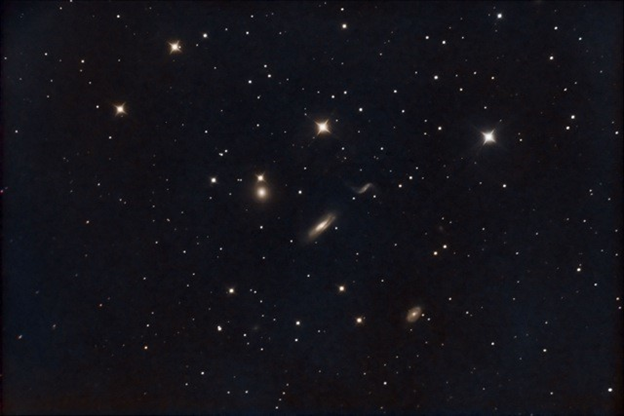
Image of NGC 3190 Galaxy Cluster by Jim Gianoulakis.
While this group of galaxies is evolving and interacting together across vast distances, you can collect them in one eyepiece view. But, they are by no means easy, says Tammy Plotner, who recommends a minimum of 150mm telescope to see them under dark, clear skies.
Recent observations and sketches by notable observers:
Roger Ivester of North Carolina:
The following observations were made using a 10-inch f/4.5 reflector, from a fairly dark site in the South Mountains of western North Carolina. The accompanying sketch was made at a magnification of 114x, with a 0.50º field of view.
At magnitude 11.0, NGC 3190 is the most prominent and most easily recognized member. This galaxy is bright, highly elongated, and oriented NW-SE. It also has a brighter elongated core.
NGC 3193 at magnitude 10.9, appears fairly small, round and highly concentrated in the middle. With higher magnification, a stellar nucleus can be seen.
NGC 3187 is the faintest of the group at mag. 13.1, and can be very difficult. It is located about 5 arc minutes NW of NGC 3190. This small and very faint galaxy is highly diffuse without concentration. On nights of less than excellent transparency, this galaxy is not visible with the 10-inch. A challenge for sure, and averted vision is mostly always required for me, and seldom can I hold this faint galaxy constantly.
NGC 3185 is faint at magnitude 12.2, and lies about 15 arc minutes SW of NGC 3190. The shape is mostly round, appearing as a very diffuse subtle glow, but fairly easy to see.
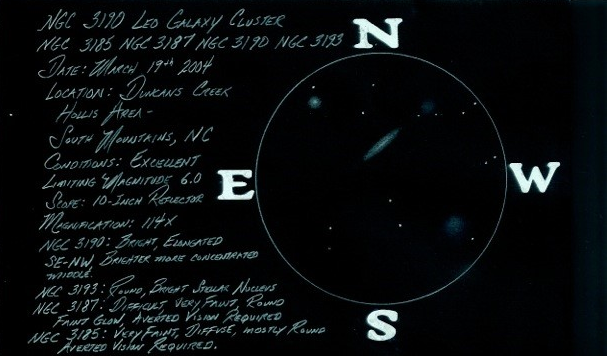
Jaakko Saloranta, of Finland:
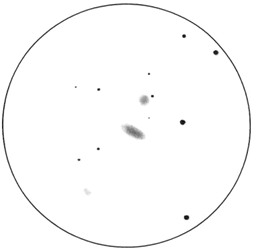
Hickson galaxy clusters are generally considered to be objects for larger apertures but several of the galaxy clusters can be seen even with small telescopes. A good example is Hickson 44 - the second brightest of all the Hicksons - in which all of the member galaxies are brighter than 13.5 magnitude. This makes the two brightest members (NGC 3190 & NGC 3193) fairly easy targets for small apertures and the two fainter ones (NGC 3185 and especially NGC 3187) a great challenge for any telescope.
With a cheap 3 inch (80 mm) refractor I was able to see three of the four members from under a fairly dark location at the Teide caldera in Canary Islands (Spain) from an altitude of 7480 feet (2280 meters). The brightest member in the group - NGC 3190 appears as a fairly bright, elliptical 3' x 1' disk with a brighter nucleus. NGC 3193 an even brightness, round glow close to a 9th magnitude star. NGC 3185 appears only as a very faint, very small and slightly elliptical streak of light without details. With an 8 inch Orion DSE, all four of the members are visible at 96x under mediocre skies, although NGC 3187 remains very elusive.
Fred Rayworth, of Las Vegas, Nevada:
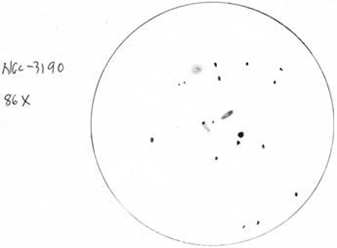
From the desert SW, using a 16-inch f/6.4 at 70X, the four galaxies were easily seen as variously shaped smudges. NGC 3190 is a fairly bright oval smudge right in the middle of the group, mostly featureless. Just a bit NE, and next to a relatively bright star is NGC 3193, a slightly brighter ball of light. It reminded me of an unresolved globular. WSW lies NGC 3185, appearing as a soft, mostly round glow. The most difficult of the group is NGC 3187 at mag. 13.0 and is by far the most difficult of the group. It lies just a few minutes, NNW of NGC 3190. By far the hardest one to see is NGC 3187. All four galaxies fit nicely in a 1/2º field of view.
Interested in contributing your observations to the next Deep Sky Challenge? Email mariag@telescope.com.
{ sourceURL:'/catalog/includes/quicklook_miniproduct.jsp?entityId=106673&entityTypeId=4', sourceSelector:'' }
More to The Picture: The Cave Nebula
If glancing at this image takes your attention immediately, it should. Not only is it ethereally beautiful and aesthetically pleasing, it's shrouded in bizarre cosmological coincidences. We see a dazzling array of multi-colored stars, but within this single area of space is a hidden ancient planetary nebula, a reflection nebula, a dark dust cloud, a Bok globule, a peculiar low-mass protostar, the edges of a massive X-ray bubble and the fringes of a supernova remnant. Hold on to the light of the Cepheus Flare and let's step inside Wolf's Cave...
In the northern fringe of Cepheus lay an enigmatic gathering of cosmic dust clouds that first gained the attention of astronomers in 1908 when Max Wolf and August Kopff first noticed its complex structure. Using a 28-inch reflector, Wolf took a 2.5 hour exposure of the dusty area which he described as a "long, dark lacuna" and positively identified the reflection nebula cataloged as Sh2-155. His assistant, Kopff, using the same photographic plate, was the first to note the Bok globule which later became cataloged by E.E. Barnard as B175.
Those were wonderful years for astronomy; years when poetic descriptions were still acceptable to the general consensus, and Wolf dubbed the area the "Cave Nebula." But this isn't a spelunker's dream, because the radiation emitted from the nearby bright, young OB star would obliterate any explorer into this thick knot of interstellar dust. But there was one traveler, who dared: a main sequence star whose course took it through the dust maul at nearly 12 km per second. Running headlong into the obscuring mass at nearly supersonic speeds, the star slammed into Bok globule B175, sending shockwaves rippling through the structure and producing collisional excitation and ultraviolet pumping. The result of this cosmic crash was, of course, noted by Wolf in 1908 on his photographic records, but it was while searching high above the Milky Way's galactic plane in 1934 that this dusty molecular cloud was spied by Edwin Hubble and became known as the Cepheus Flare.
Together, reflection nebula Cederblad 201 and Bok globule B175 are referred to as van den Berg 152, and sometimes called Lynds Bright Nebula 524. Yet, it is Cederblad 201 itself that so interests modern science. Why? According to studies done by Goicoechea (et al) with the Spitzer Space Telescope, "We present the detection and characterization of a peculiar low-mass protostar (IRAS 22129+7000) located 0.4 pc from the Cederblad 201. The cold circumstellar envelope surrounding the object has been mapped through its 1.2 mm dust continuum emission with IRAM 30 m/MAMBO. The deeply embedded protostar is clearly detected with Spitzer. Given the large near- and mid-IR excess in its spectral energy distribution, but large submillimeter-to-bolometric luminosity ratio (it) must be a transition Class 0/I source and/or a multiple stellar system. Targeted observations of several molecular lines from CO, 13CO, C18O, HCO+, and DCO+ have been obtained. The presence of a collimated molecular outflow mapped with the CSO telescope in the CO line suggests that the protostar/disk system is still accreting material from its natal envelope. Indeed, optically thick line profiles from high-density tracers such as HCO+ show a redshifted absorption asymmetry reminiscent of inward motions. We construct a preliminary physical model of the circumstellar envelope (including radial density and temperature gradients, velocity field, and turbulence) that reproduces the observed line profiles and estimates the ionization fraction. The presence of both mechanical and (nonionizing) far-ultraviolet (FUV) radiative input makes the region an interesting case to study triggered star formation."
Star formation? Not surprising, deep inside the cave of a molecular cloud, but, if you'll pardon the pun, the plot thickens. The entire complex is about 1400 light years away from us at the perimeter of yet another massive molecular cloud, and at the same time it is situated on the frontier of a massive X-ray bubble located between the constellations of Cepheus and Cassiopeia. And that's not all. Thanks to hydrogen-alpha imaging, the whisper thin strands of an ancient supernova remnant near Cederblad 201 have also been detected.
Like a radioactive Roomba, the interstellar dust is being swept up as the expanding debris field moves toward where the Cepheus Flare lights the entrance to Wolf's Cave. These shocked molecular gas filaments were discovered in 2001 by John Bally and Bo Reipurth and belong to SNR 110.3+11.3; an unfathomably huge supernova remnant positioned only 1300 light years way, one of the closest known. Add to that the output of ancient planetary nebula Dengel-Hartl 5 and the celestial stew thickens even more. It is estimated all the elements will combine in about a thousand years and the product could very well ignite an incredible burst of star formation.
But, a thousand years is merely a blink of an eye in the grand scheme of things, isn't it? According to the 2007 studies done of the Wolf's Cave region by Edwin Bergin and Mario Tafalla; "Cold dark clouds are nearby members of the densest and coldest phase in the Galactic interstellar medium, and represent the most accessible sites where stars like our Sun are currently being born. Newly discovered IR dark clouds are likely precursors to stellar clusters. At large scales, dark clouds present filamentary mass distributions with motions dominated by supersonic turbulence. At small, subparsec scales, a population of subsonic starless cores provides a unique glimpse of the conditions prior to stellar birth. Recent studies of starless cores reveal a combination of simple physical properties together with a complex chemical structure dominated by the freeze-out of molecules onto cold dust grains. Elucidating this combined structure is both an observational and theoretical challenge whose solution will bring us closer to understanding how molecular gas condenses to form stars."
Carbonates from the planetary nebula, dust, exciting energy, photoelectric heating, polycyclic aromatic hydrocarbons, molecular gas... Where will it all end? What we do know is massive, bright star clusters are created from the giant molecular clouds. Will the Cepheus Torch one day ignite a brilliant stellar display from the mouth of Wolf's Cave? I wonder...
{ sourceURL:'/catalog/includes/quicklook_miniproduct.jsp?entityId=106644&entityTypeId=4', sourceSelector:'' }
Spring is on its way, so get outside for stargazing fun in March! There are bright planets to observe and it's the start of Galaxy Season, so there's plenty of celestial sights to enjoy in the third month of 2014. Here are a few of Orion's top picks for March stargazing:
- Mars gets bigger and brighter - In mid to late March, the red planet Mars will get brighter and bigger in the night sky. Mars reaches opposition - its closest yearly approach to Earth - in early April, but it will start to be an attractive target in the late night hours of March. The disk of the planet will grow in apparent size from 12 arc seconds to almost 15 arc seconds as its orbit brings it closer and closer to our own planet. While almost any size telescope will show you Mars, an 80mm refractor or 6" or larger reflector are really needed to see any detail on the planet. The Orion Mars Filter will help bring out the elusive darker markings on Mars!
- Catch Jupiter in the early evening - If you haven't sought out spectacular Jupiter with a telescope this year, now's your chance! Gigantic Jupiter will be well placed for visual observations and imaging in the early evening hours of March. Like Mars, any telescope will display the basic features, but bigger scopes show a wealth of detail. Look for Jupiter in the constellation of Gemini and try the affordable Orion Jupiter Filter to enhance contrast of the major cloud belts and the famous Great Red Spot!
- Get ready for Saturn - Saturn rises before midnight in the constellation of Libra and will be a good telescopic target in the late evening and morning skies of March. Just about any telescope can show the amazing ring system, and larger models will reveal the Cassini Division feature of the ringed planet.
- Hunt the hunter - March is still a good time to see the constellation of Orion and M42, the Orion Nebula. After March, our namesake constellation will get lower and lower in the west, making it harder to see as the Sun moves eastward in the sky. The wispy Orion Nebula can easily be seen with 50mm or larger binoculars, and using a telescope will reveal more detail.
- Brilliant binocular clusters - Grab a pair of 50mm or larger binoculars in March for great views of the Pleiades cluster (M45), the Beehive cluster (M44), and the must-see Double Cluster in Perseus. These sparkling sky gems are simply beautiful when observed with big binoculars.
- Galaxies galore - By about 9pm throughout March, Ursa Major, Leo, and the western edge of the Virgo galaxy cluster are high enough in the eastern sky to yield great views of some of our favorite galaxies. Check out the bright pair of M81 and M82 just above the Big Dipper asterism. Look east of bright star Regulus in Leo to observe M65 and M66, which can be seen in almost any telescope. In the northeastern sky, check out the famous Whirlpool Galaxy (M51). While the Whirlpool can be seen with modest 50mm binoculars, using a 10" or 12" telescope in a dark sky site will display the distant galaxy's beautiful spiral arms. With an 8" or larger telescope and a dark sky this region of the sky harbors dozens of galaxies - try to find them all!
- Challenge object, NGC 2419, "The Intergalactic Wanderer" - In the constellation Lynx, from a location with dark skies using a good 4.5" or larger telescope you can find NGC 2419, a globular star cluster. To make this glittering cluster an easier target to locate, we suggest a 6 or 8" telescope, and a larger telescope is needed to resolve the cluster into individual stars. NGC 2419 is a distant globular cluster, once thought to lie outside our Milky Way galaxy.
- Get ready for April's lunar eclipse! - Mark your calendars - there will be a total eclipse of the Moon on the night of April 14/15, the first in years for North America.
All objects described above can easily be seen with the suggested equipment from a dark sky site, a viewing location some distance away from city lights where light pollution and when bright moonlight does not overpower the stars. All objects have been verified by actual observations by Orion Telescopes & Binoculars Staff at Fremont Peak State Park, and/or Deep Sky Ranch, 60 miles and 90 miles respectively from San Jose International Airport, San Jose, CA.
{ sourceURL:'/catalog/includes/quicklook_miniproduct.jsp?entityId=106632&entityTypeId=4', sourceSelector:'' }
It wasn't until 1922 that NGC 2419 was finally determined beyond a doubt to be a globular cluster. For years the object baffled astronomers, who now also refer to it as the "Intergalactic Wanderer." The cluster's sky location is directly across from the Milky Way, which is unusual, but it's also extremely distant- some 300,000 light years from the Sun-and seems to be drifting through intergalactic space.
"Scanning the distances for globulars listed in Sky Catalogue 2000.0 reveals several other very distant objects, but none is even close to the brightness of NGC 2419," writes Walter Scott Houston in Deep-Sky Wonders. "Of the approximately 100 known globular clusters, almost all lie within a 65,000 light year radius of the galactic center."
The 'wanderer' is located about twice the distance from the Sun than the Large Magellanic Cloud, and magnitude estimates are between 9 and 10. Although it is one of the dimmest globular clusters, it is fascinating to peer at an object that is extragalactic.
Although this cluster can be picked up by smaller telescopes, it's quite a challenge, and we recommend using a 6-inch or larger telescope, especially if you're a beginner looking for it for the first time. NGC 2419 is located at RA 07hr 38.1m Dec. +38 53' 11.5M; at eastern end of 7-8 magnitude 2-star chain.
Below are two recent observations of NGC 2419 from seasoned observers. Take a stab at the March challenge object and share your own report in the review section of this article.
Roger Ivester, from his backyard in Boiling Springs, North Carolina:
When using my 10-inch at 191x, and averted vision, a very interesting feature was noted. The mostly round shape of the globular has a more concentrated area on the northern edge which creates a crescent shape. Can you see the brighter northern section? The following pencil sketch was made on a blank 5 x 8 note card with the colors being inverted using a scanner.
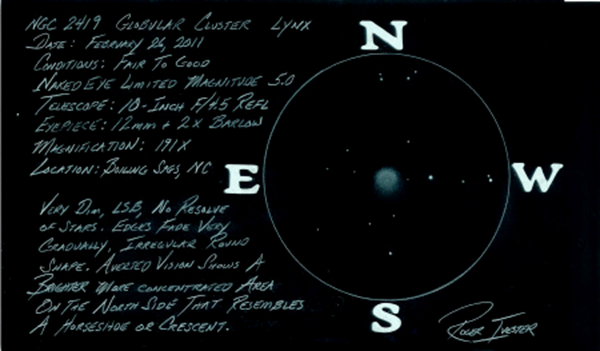
Kevin Ritschel of Orion, from Deep Sky Ranch, Paicines, CA:
Feb 22, 2014: SQM reading of 21.6
18" Custom Dob
6mm Eyepiece (305x)
NGC was immediately obvious in the eyepiece, easily recognizable as a round globular cluster. Myself and one other observer could easily see a "grainy" or sugar-bowl-like texture to the cluster. We both thought that the brighter members of the cluster would be intermittently observable, although the cluster was not "resolved" in the classical sense. While the cluster was "easy" in this size instrument, the member stars we were seeing was right on the limit.
Feb 23, 2014: SQM reading of 21.3
127mm f/7.5 triplet Refractor on Atlas Pro GoTo mount.
22mm ocular (43x)
5mm ocular (190x)
Using the GoTo, I slewed to NGC 2419, not necessarily expecting to see too much. But with 43x, the cluster was immediately obvious with direct vision! There are two fairly bright foreground stars, almost like a very wide double, that point directly at NGC 2419, the separations between the foreground stars and the distance to NGC 2419 are nearly identical making the entire asterism look like an exclamation point with a "fuzzy" period ( ..*). Since the globular was round and "fuzzy," it would have been easy to think this was a small galaxy; since there was no resolution of the cluster achieved, it would only have been the strong round symmetry that would cause someone to suspect it was not a galaxy.
At 43X, the cluster is visible with direct vision and quite noticeable. At 190x in this telescope, the cluster was so spread out that the cluster was far more difficult to see and the view was not satisfying (the power was too high for this small telescope and faint globular cluster).
Image of NGC 2419 by Jim Gianoulakis of Las Vegas:
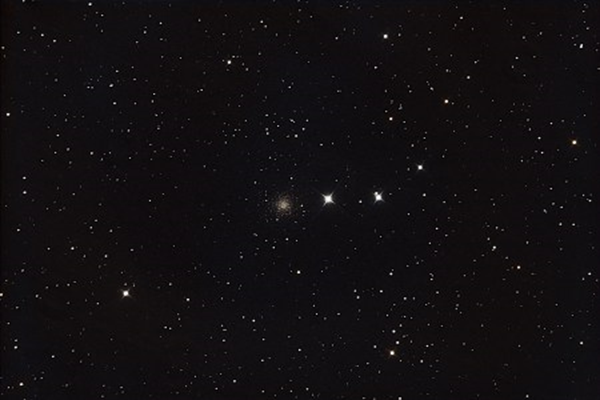
Have you observed NGC 2419? Let us know what you see.
{ sourceURL:'/catalog/includes/quicklook_miniproduct.jsp?entityId=106613&entityTypeId=4', sourceSelector:'' }
Often times you'll see these wide field photos of astrophotography images. One way to obtain a wide field photo of the night sky is to create a mosaic of smaller images. Adobe Photoshop has a tool called "Photomerge" and it's very easy to use to create wide field images of the night sky.
To get started, you first must take "overlapping" images so Photoshop will know how to stitch the mosaic together. Ideally, try to get approximately 20-25% overlap on each photo.
The example I have is NGC 2264. Here's the top image:
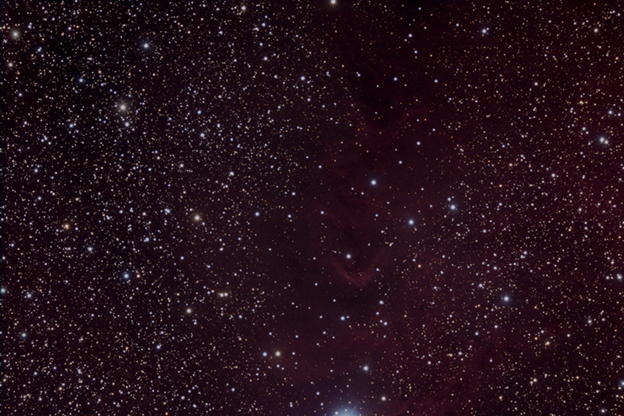
NGC 226 Image 1
And here's the bottom image:
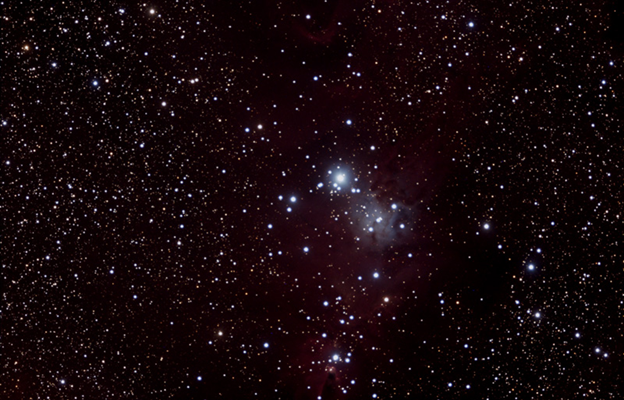
NGC 226 Image 2
Before you merge your photos, crop any "stacking feathers" from your image. When you "stack" your image you typically see feathered edges and if you try to merge these feathered edges your merged photo will show a seam or line where the images overlap.
Remember, you shouldn't start processing your image before you merge the photo. After you've merged the photo then you can start processing your image. If you process each panel separately you will see differences and the mosaic will look like a bunch of stitched together patches.
In Photoshop simply select FILE'AUTOMATE'PHOTOMERGE, this will bring up a dialog box like this:

Click the BROWSE button and select your 16 bit TIFF files. I leave the layout to "Auto" and Check blend images together. Then press "OK" and let Photoshop do its magic! Now you may think it doesn't matter which order you select your files, but it does make a difference! In this example I selected the Bottom FIRST:

The results when selecting Bottom FIRST:
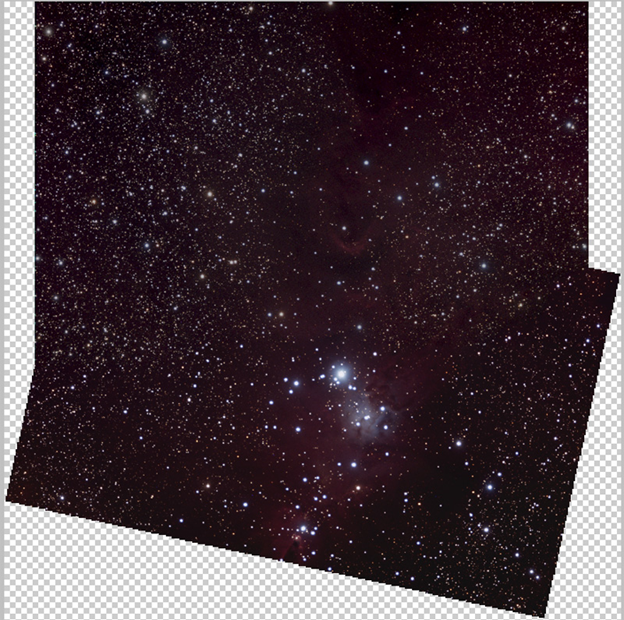
When I selected the "Bottom" first, it didn't give me the best crop results. I really would like to keep the bottom part of the image "square" because there are more important details on the bottom.
However, if I select TOP First:

The results when selecting TOP FIRST:
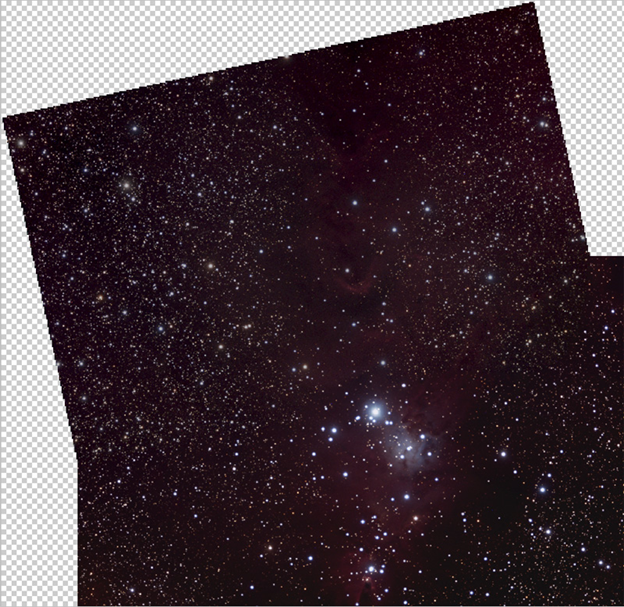
Now when I crop the image the bottom details will be square and I will have a nice mosaic.
Here are the results after I merged the photos and then processed the image:
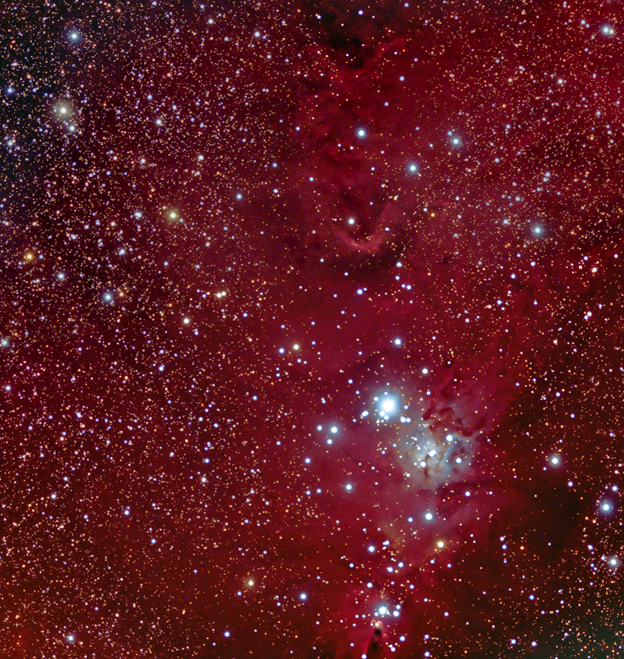
Results - NGC226 Mosaic
If you would like to view this tutorial in a video, please visit Astrophotography Tutorials by Doug Hubbell on YouTube: http://youtu.be/NRkLtM-8h4M.
{ sourceURL:'/catalog/includes/quicklook_miniproduct.jsp?entityId=106547&entityTypeId=4', sourceSelector:'' }
At Orion, we spend a lot of time under the stars. Sometimes we use a telescope, sometimes we use our plain old eyeballs, but much of the time, we keep both eyes open and use a pair of binoculars. Just about any type of binocular will show you something in the sky, but we generally use binoculars of 40mm diameter or larger; a lot of people prefer 50mm or larger. As with a telescope, the darker the sky, the more you will see, and you'll be amazed what you can see with binoculars under a dark sky!
Some have even said that two eyes are better than one. If you've ever used a pair of astronomy binoculars, you have every right to chime in with your opinion.
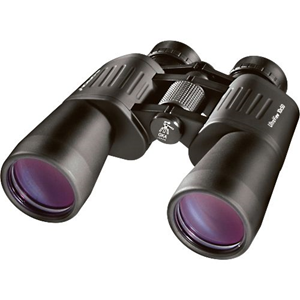
Orion 10x50 UltraView Wide-Angle Binoculars
Having a pair of binoculars on hand opens up an easy possibility: a quick, five minute view of the cosmos that doesn't require any sort of set up or telescope dragging. If skies are clear, you can fit this in before bed, or while walking your dog after dark. You'll be amazed at what you can see in just a few minutes under dark skies, and the expanded perception it will leave you with in the weeks to come.
Without further ado, here is Orion's Top 25 Showpiece Binocular Objects in the night sky. We know you have probably viewed the following objects in a telescope, but have you seen them in binoculars? Let us know in the "review" section of this article, or in a comment on this article on our Facebook Page.
Good luck!
Orion's Top 25 Binocular Targets:
Spring
- M44, The Beehive
- M81 & M82, a face-on and edge-on Galaxy Pair
- M65 & M66, a Galaxy Pair
- NGC 253 & NGC 288, a Galaxy and Globular Pair
- M101, The Pinwheel Galaxy
- M51
- M108
- Omega Centauri
Summer
- M8/M20 Complex
- M16
- M17
- M22
- The North America Nebula
- M27, The Dumbbell Nebula
- M13, the Great Cluster in Hercules
Fall
- M45, The Pleiades
- NGC 869 and NGC 884, The Double Cluster in Perseus
- M31, The Andromeada Galaxy
- M33, The Triangulum Galaxy
- The Helix Nebula
Winter
- Orion Nebula, M42
- Rosette Nebula
- M36/M37/M38, a trio of Open Clusters in Auriga
- M47/M46, a pair of Open Star Clusters
- M78
Let us know if you were able to find any of these objects in binoculars, or have any favorites to add, by leaving a "review" of this article, or leaving a comment on this article on our Facebook Page.
{ sourceURL:'/catalog/includes/quicklook_miniproduct.jsp?entityId=106519&entityTypeId=4', sourceSelector:'' }
You may have heard recently that the Sun's magnetic field has undergone a reversal. It's true. While this though may sound a little terrifying, the fact is that our Sun does this about every eleven years or so. It's part of what is known as the solar cycle. During the flip, there is often solar activity like flares, which can affect space electronics, but we have safeguards in place for most flares. And while weather can be affected, the effects are usually subtle.
The first evidence of this solar cycle was seen in the early 1600s, when observations of sunspots showed there were periods of more and less sunspots. By the mid 1800s it became clear that sunspot frequency generally oscillated over a period of about 11 years.
We now know that sunspot activity is driven by the Sun's magnetic field. The sunspot cycle is just one consequence of the variations in the Sun's magnetic activity. When the Sun's magnetic field is quiet, there tend to be few sunspots. When the Sun's magnetic field is particularly active, there tend to be lots of sunspots, as well as other things like prominences and solar flares. It is during this active period that the Sun's magnetic field will undergo a reversal.
We're not entirely sure what causes this reversal. But we do know the Sun's magnetic field is due to a magnetic dynamo in its interior. The flow of charged plasma induces the magnetic field, similar to the way a flow of current in a wire produces a magnetic field. Changes in the behavior of that dynamo is what leads to the solar cycle. But the mechanism behind those changes is unclear.
Part of the difficulty in understanding these reversals is that while they usually occur roughly every 11 years, they do not occur like clockwork. There are cycles that are a bit shorter and a bit longer. Also, the Sun can enter extended periods of lesser activity. For example, from about 1790 to 1830 there was a period when the oscillations were smaller, and the periods of maximum sunspot activity were less intense, known as the Dalton minimum. We're not entirely sure why such minimums occur either.
Interestingly, our current solar cycle (known as cycle 24) has been noted to have some similarity to the early stages of Dalton minimum. Before the Dalton minimum, cycles got successively smaller, with the same drop to about half the activity that had been typical. If we follow a similar pattern, then cycle 25 will be about the same as cycle 24, and we will have several decades period of a relatively quiet Sun. What does this mean for humans and the Earth? Low solar activity correlates with slightly cooler temperatures, but that's about all people might notice. Our atmosphere is a pretty good barrier to anything dangerous.
But now that the Sun's magnetic reversal has occurred for this cycle, we know we're about halfway through the solar maximum. You can expect word of the next magnetic reversal to hit the news in about 11 years.
Did you know that the magnetic poles of the Earth also flip? The last time it flipped was 700,000 years ago, according to evidence found in geological strata. What will happen when it flips again? That is not entirely clear, but scientists have many speculations. Stay tuned for my next article on geomagnetic reversal.
Read more articles by Brian Koberlein here.
CAUTION: Never look at the Sun, either directly or through a telescope or binocular, without a professionally made protective solar filter installed that completely covers the front of the instrument, or permanent eye damage could result. When using a truss tube telescope to view the Sun, both a properly fitting solar filter and light shroud are required.
{ sourceURL:'/catalog/includes/quicklook_miniproduct.jsp?entityId=106499&entityTypeId=4', sourceSelector:'' }
Planetary photography can be very interesting and rewarding. We are lucky to have several planets in our solar system that are bright enough at various times of the year to see and photograph. Our solar systems most massive planet, Jupiter, is one of those, providing some breathtaking views and images. The planet features colorful bands, a Giant Red Spot, and four bright moons that are easy to see and capture in images.
The first thing you will need to photograph Jupiter effectively is a telescope with a relatively long focal length. I have an Orion APO refractor with 480mm of focal length, but that simply isn't enough to capture any noticeable detail on Jupiter's surface. That is more of a wide-field scope for things like galaxies, star clusters, and nebulae. My other telescope is an Orion Maksutov-Cassegrain model with 2700mm of focal length. Now we're talking! I would say that a focal length of around 1500mm would be the minimum that I would recommend for planetary work.
Now what kind of camera should you use? Some prefer to connect a DSLR or Micro Four Thirds camera to the telescope and shoot in what we call prime focus. I have done that a few times myself, but the general consensus is that a CCD camera is a better option. I use an Orion Planetary Imaging Camera and I have had excellent results with it. A CCD camera is rather small and you will need to connect it to a laptop during your imaging session. The camera displays your target on the laptop, and you will use special image-acquisition software on the laptop to shoot videos of your target. Why shoot video? The idea is that you want to capture a lot of detail, and video offers hundreds (or thousands) of frames. You then use a stacking program such as AutoStakkert, AviStack, or RegiStax to align and stack your video frames. This will (hopefully) produce a nicely detailed composite of your video frames. You can then take that composite image and edit it in Photoshop, Lightroom, or any other image-editing program you prefer.
Another consideration for shooting a planet is how high it is above the horizon. When an object has just come up over the horizon, you will be observing it through a lot more of Earth's atmosphere than if it were up higher in the sky. So don't try to image Jupiter just after it has cleared the trees. Wait until it's at least about 45 degrees or higher if possible so you will be dealing with less atmospheric interference. Here is an example of a shot of Jupiter when it was just coming up.
You can make out the bands, but they are pretty blurry.
Now here is a better shot that was taken when Jupiter was much higher in the sky.
Here you can see much better detail and you can even see three of the Galilean Moons. Two are on the left and one is on the right.
Once you've set up your scope, connected the camera, and pointed at Jupiter you will now want to make sure that your focus is as accurate as possible. Poor focus will mean you get a blurry image and that is incredibly frustrating. You might want to consider a dual-speed focuser if you don't have one. I have a dual-speed Crayford focuser and it lets me do very fine adjustments to the focus and that has really helped with the quality of my images.
After you've gotten focused, it's now time to start shooting some video. Check to see how many frames per second your camera can shoot, and start with a video that will capture 500 frames. If your camera shoots at 15 frames per seconds, that's about 33 seconds of video. You might be surprised at how good of an image you can get from a video of that length.
Now that you've got a video file, you will have one of those stacking programs align the video frames and then stack them into one composite image for you. Consult the documentation for the program that you are using. I have found that I get the best results from AutoStakkert, but others prefer RegiStax or AviStacker. It couldn't hurt to process the same video file with multiple programs and see which one comes out best. I often do that myself.
When you finally get a composite image, feel free to use Photoshop, Lightroom, or whatever your favorite image-editing program is to do some processing. I often use the sharpen and levels adjustments to refine the image and try to bring out as much detail as possible. If your image isn't that great, try shooting 1,000 frames next time. If your focus is good and Jupiter is high enough in the sky you should be able to get some pretty good images.
After you've gotten some practice with Jupiter, try your hand at the other bright planets. Saturn and Mars will being coming into the night sky this spring, and they make excellent targets as well.
Happy shooting and clear skies!
Do you have any questions or experiences to share about imaging Jupiter? Share them in the 'review' section of this article.
{ sourceURL:'/catalog/includes/quicklook_miniproduct.jsp?entityId=106485&entityTypeId=4', sourceSelector:'' }
A bright supernova has appeared this week in the galaxy known as M82, or the "cigar galaxy." M82 is a starburst galaxy about 12 million light years away. On a cosmic scale, this is right in our backyard. In fact it is the closest supernova we've had since 1993.
If you've ever wanted to view a supernova (and you live in the Northern hemisphere) then now is your chance. M82 is in the constellation Ursa Major. If you find the big dipper, then it is diagonally up and away from the handle about the distance of the pan. Click here to consult star chart. It is a bright galaxy, so it is pretty easy to find with a pair of binoculars or a small telescope. This new supernova about magnitude 11, so is bright enough to view with a small telescope. See observing sketch of M82 SN by Roger Ivester, 1/22/2014.
Although news of the supernova has just hit the media, we already know a few things about it. From its spectra we know it is a Type Ia supernova. The traditional view for Type Ia Supernovae is that they are the result of an interaction between a red giant and white dwarf in a binary system. A white dwarf is a star so dense that only pressure of electrons keeps it from collapsing under its own weight. But electron pressure can only hold up against the weight of gravity to a point: known as the Chandrasekhar limit, this is about 1.4 solar masses. If a white dwarf is in a close orbit with a red giant, some of the outer layer of the red giant can be captured by the white dwarf. The white dwarf then gains mass until it is pushed past the Chandrasekhar limit, resulting in runaway fusion that causes the white dwarf to explode.
But new evidence indicates that Type Ia supernovae are due not to a white dwarf being pushed past its limit, but rather due to a collision of two white dwarfs. Often, two white dwarfs in a close binary have a third star orbiting the pair. As this third star gravitationally interacts with the binary dwarfs, it can cause their orbits to degrade to the point where they collide with each other. The resulting explosion produces the supernova.
Type Ia supernovae are particularly useful to astronomers because they always explode with a similar luminosity. This means we can observe how bright the supernova appears and compare it with the actual brightness to determine its distance. Supernovae such as this one help astronomers determine the distance to M82 and other galaxies as distant as billions of light years.
Whenever a "close" supernova occurs, there's often speculation about when one will be visible in our galaxy. It turns out we're long overdue for one. In November of 1572 Wolfgang Schuler observed a supernova in the constellation of Cassiopeia. A few days later it was observed by Tycho Brahe, who began taking careful observations of this visiting star, which came to be known as Tycho's supernova. About 30 years later, in 1604, Kepler observed a supernova in the constellation of Ophiuchus. Since then, there hasn't been an observed supernova in our galaxy, which is unfortunate and a little perplexing.
Studies indicate that a galaxy of our size and type should have a supernova about once every 50 years. That we haven't seen another in 400 years seems to indicate that there's a crucial aspect of supernova physics we don't understand. Either that, or astronomers are having a 400 year long streak of bad luck.
Another topic that often gets raised is whether a supernova could occur close enough to threaten life on Earth. It turns out there is no need to worry. Although supernovae can outshine an entire galaxy at maximum brightness, one would probably need to be closer than 100 light years or so to pose any threat. Of the stars we know that could become a supernova, the red giant star Betelgeuse is perhaps the closest, at a distance of 650 light years. At some point in the next several millennia Betelgeuse will go supernova, and when it does it would have an apparent magnitude of about -11. That is brighter than any star or planet in our sky, but it isn't quite as bright as a full moon.
So even if Betelgeuse does explode in the near future, it won't be the end of the world. It will just be a short lived beacon in our night sky, casting shadows on moonless nights.
Have you observed the supernova in M82? Let us know if you see it, and what you used to find it.
Read more articles by Brian Koberlein here.
{ sourceURL:'/catalog/includes/quicklook_miniproduct.jsp?entityId=106479&entityTypeId=4', sourceSelector:'' }
By David Jay Brown
For fans of the science fiction film Contact--where a scientist played by Jodie Foster establishes communication with an advanced extraterrestrial species, the SETI Institute has almost mythic status.
However, SETI, which means "Search for Extraterrestrial Intelligence"--is the acronym for a very real organization which scans the skies every night in search of some type of evidence for the existence of intelligent extraterrestrials-in hopes of establishing contact.
Becoming an official nonprofit corporation in 1984, SETI's mission is to "explore, understand and explain the origin, nature and prevalence of life in the universe." Using optical and radio telescopes, SETI's team of determined astronomers and communicational specialists seek the answer to one of mankind's most gnawing question: are we alone in the universe?
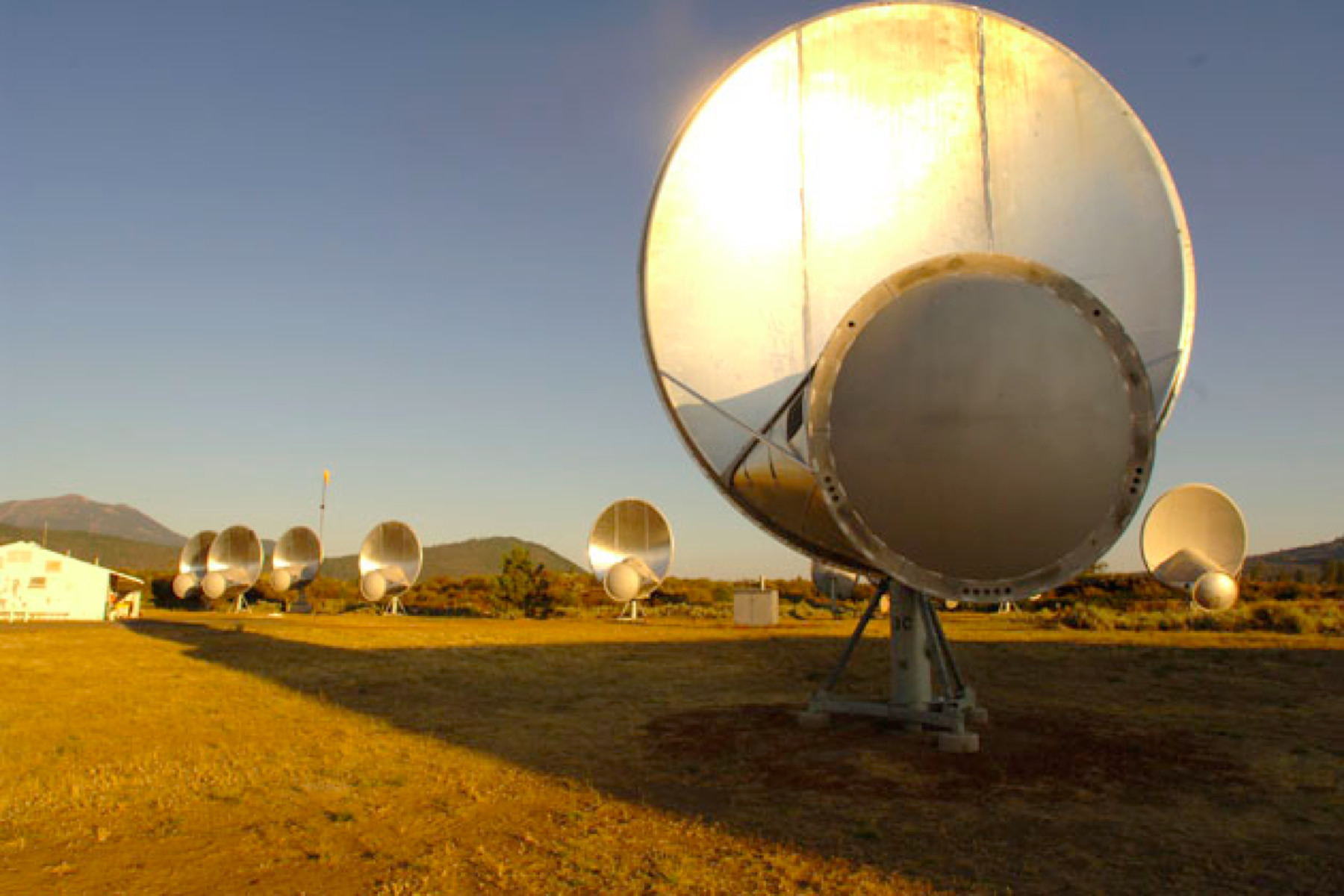
Allen Telescope Array (ATA) at the Hat Creek Observatory in Northern California scans known planetary systems for signals. Credit: Seti.org
Seth Shostak, Ph.D., is the senior astronomer for the SETI Institute, based in Mountain View, California. He hosts the popular weekly radio show "Big Picture Science," and is also widely recognized as a science educator. In 2004, Shostak won the prestigious Klumpke-Roberts Award by the Astronomical Society of the Pacific in recognition of his "outstanding contributions to the public understanding and appreciation of astronomy."
I spoke with Shostak on January 16, 2014. In conversation, Shostak combines open-mindedness and skepticism with a vast array of knowledge, and he is especially talented at seeing the "big picture." In the following interview of Shostak, he talks about SETI's current search for life in our galaxy, whether or not he thinks alien civilizations are benevolent, SETI's plans for the future, and what amateur astronomers can do to help in the search for extraterrestrial intelligence.
David Jay Brown: How did you first become interested in astronomy and the search for extraterrestrial intelligence?
Shostak: That all began as a kid, of course. I was interested in astronomy from the age of 8, since I was looking at a book that my parents had. It was an atlas, but in the back of the atlas there was a funny-looking diagram, which I didn't understand.
So I asked my mom about it, and she said, "Oh, that's a diagram of planets."
I had never heard the word "planets" before, but once I heard it, I got interested in that--and by the age of 11, I had built my own telescope.
As far as aliens go, well, that was also, I'm sure, from about the age of 8--because there were a lot of science fiction films in the movies those days featuring aliens. Aliens were always doing something terrible to humanity in these films--and I went to them all!
Brown: Can you tell us about some of the latest projects that SETI is working on?
Shostak: Our SETI projects are multiple. We use the Allen Telescope Array--with a large number of small dish antennas--so we're doing what's called "radio SETI." That's looking for the kinds of signals that transmitters would make.
We have another project where we're looking at the galactic center. That's something that I think is a good idea, because that's a special place in the Milky Way. Incidentally, my first published SETI experiment--in 1981--was to look at the galactic center, the center of our galaxy.
A really advanced society would know that everybody is going to be looking at the galactic center sooner or later--so they might put a big transmitter there to act as some sort of beacon. So we're doing looking there.
We're also looking at star systems that are known to have planets. Of course we do that. I wrote an article about this that's in the January issue of Astronomy magazine actually, about looking for signals from the neighborhoods of red dwarf stars.
I honestly think that that's a very good SETI strategy, because probably 1 in 5--certainly 1 in 6, at least--of red dwarf stars, will have a habitable planet orbiting around them, it seems. Red dwarf stars are also so numerous, and so old, that they're just perfect for a SETI search.
Brown: What research techniques do you think hold the most promise for establishing contact with a race of intelligent extraterrestrials?
Shostak: Of course nobody knows that. If we knew that, then we would put all our resources into the most promising techniques.
We're great fans of radio SETI, and that's the traditional form of SETI. That was used in the first SETI experiment, at least the first modern SETI experiment. It was a radio search in 1960 by Frank Drake.
Then we continued to do that, because--in terms of the energy required--it turns out, it's very easy and inexpensive to send bits of information from one star system to another using radio. So I do like that.
But it's also the case that optical SETI appeals to me, and I think that it will appeal to me more in another couple of years, when we have new detector technology that would allow us to survey the sky much more quickly, in the optical.
But there are also other things that are coming down the pike, if you will. These are the kinds of SETI experiments where you don't actually deliberately look for ET, as it were, but you mine data collected by other sorts of instruments. For example, large telescopes that are intended for other purposes, but might in fact reveal the activities of very advanced societies.
There could be engineering projects that are big enough for you to see. So those are, all to me, very interesting techniques.
Brown: Taking the recent discoveries of so many exoplanets into account, how common do you think intelligent life is in the universe?
Shostak: Well, that's a complete guess, but it's now looking like there are roughly a trillion planets in the galaxy. The current estimate is that 1 in every 5 stars has an earth-like world. If that's true, then there are on the order of 50 billion "Earths" in the Milky Way galaxy.
Now, what fraction of them have life? I bet most of them have life, actually. But what fraction have intelligent life? That is a different question. But even if it's one in a thousand, then that's still 50 million societies that have sprung up in the galaxy--a galaxy that we know for sure has supported intelligent life at least once.
So if intelligent life has any durability at all, if it can last for a million years, or something like that, then that means there are tens of thousands of worlds that are extant today, that are out there now with cosmic confreres, with intelligent beings.
That's a big number.
Brown: What type of patterns are you (or your computers) listening for when you search through the radio signals in the sky?
Shostak: It's actually very simple, because the searching is done by the computers. Of course there's a tremendous amount of data coming in. There's really a fire hose of data coming in, so you can't look for the Fibonacci series, or anything like that.
In fact, you wouldn't get it anyhow. Because you're adding up the signals coming in over a period of minutes, any sort of fast modulation or any sort of message would get smeared out anyhow.
But we're just looking for the kind of signal that a transmitter would make. A transmitter would make a signal that would have some narrow band component. It would have peaks of energy over a very narrow range of frequencies.
That's exactly what television, radar, and radio do as well. The energy is put into a narrow range of frequencies, although it is more narrow for AM than for FM. But it's still pretty narrow. So that's the kind of signal that we look for--narrow-band signals--and if we find one, and if the source is moving across the sky at the same pace as the stars, then you say, "That's not a bit of nature. That's not a pulsar, a quasar, or anything like that--it's too narrowband. That's some sort of artificial source."
Brown: Physicist Stephen Hawking has warned us not to attempt extraterrestrial communication, because he thinks that it makes us too vulnerable to the will of an advanced species, and in his new book, The Future of Mind, Michio Kaku says that you once told him that any battle between ourselves and an advanced civilization would be like a battle between Bambi and Godzilla.
How do you envision the friendliness of other intelligent species in our cosmos? Do you think that our science fiction films are paranoid, and that the universe is basically a friendly place, or do you think that we need to proceed more cautiously, and be concerned about the dangers of an intelligent extraterrestrial species, many years more advanced than ourselves, that may be seeking to exploit us or use our resources?
Shostak: To begin with, I don't think they would be interested in our resources. What do we have that they don't have much nearer by? But, aside from that, the facts are that we can't guess the sociology of the aliens.
A lot of people like that the idea of malevolent aliens, and in particular Hollywood likes it, as, of course, friendly aliens are a lot less interesting than hostile ones from a movie's point of view, so they have a vested interest in hostile aliens. As far as Stephan Hawking's point goes, I've written three articles on that. You can actually find one if you go to The Edge, for example. I wrote an essay last year about what I'm not afraid of, and I'm not afraid of that, largely because of the following:
You can't say whether the aliens would be friendly or hostile. I suspect most of them would be friendly, because, after all, I think advanced societies probably tend to be peaceful, otherwise they don't last very long.
But hey, I could be wrong. And in fact, if only 1 percent of them are not friendly, well that might still be dangerous. But my point is somewhat different. It's very easy to show that any society that has the ability to come here, and do some damage...(laughter) If they can do that, if they've got the technology to do that, they also have the technology to pick up all the signals we've been broadcasting into space since the Second World War.
So there's actually no point in being careful about this. There's no point in turning off the radar systems at the local airport. All that would do is kill people, and it's not going to make us any safer--because those signals are already on their way. And any advanced society, anyone that could ever pose a threat to us, could pick those up anyhow.
Brown: What does SETI plan to say to the first intelligent extraterrestrials that it makes contact with?
Shostak: I suppose we would just send a whole bunch of information, if we were to be responding to a received signal. Mind you, there's a protocol that says you wouldn't respond to a received signal without international consultation, and probably that means something like the United Nations... To be honest, I don't think that it matters. I honestly don't think it matters, because you could have said that maybe the natives of the Caribbean should have prepared what they were going to say to Spaniards in 1492, should their ships ever show up on the beach. It really didn't matter what they said actually.
Brown: Please tell us about the SETI Institute's radio program "Big Picture Science" that you host.
Shostak: Yes, it's a weekly show about science. We always try and put the show in the context of the overall picture of science, the overall picture of humanity, and what it means. We explore the scientific developments, and also ask how does that affect us in any way? So that's the kind of thing we do, and we try and make it fun. We have lots of very good scientists, lots of Nobel Prize winners, and so forth. We interview about 4 or 5 people every week. You can find us on the web at: www.bigpicturescience.org
Brown: What are some of the future research projects that SETI has in mind?
Shostak: Unfortunately, the future depends a lot on funding, but we would like to continue to increase the capabilities of the Allen Telescope Array, which is the instrument that we use.
This is because that would speed up the search, and speeding up the search means that, if there's going to be success, it's going to come sooner rather than later.
And as I say, there are these new approaches. I like the idea of optical SETI using two dimensional detectors.
I see that coming in, as something that right now is mostly waiting on technical developments that we won't make, but industry will.
Also, I have to say, I think that data mining would be a very interesting thing to do. There are some very big optical telescopes being built around the world, and they will provide enormous data sets that can be combed by anybody with a laptop and a little bit of time to look for anomalous features, things that aren't natural.
Brown: How can people at home get involved with SETI, using their personal computers?
Shostak: On our website we have something called SETI Live, where people can look at some of the actual data. People who are interested in participating should just look for interactive SETI programs with their internet browsers and check them out. It may be something that they want to do.
Brown: What excites you most about the search for extraterrestrial intelligence?
Shostak: That's a big picture question. I think that's the most exciting thing. This is something that everybody has some interest in. I mean, are we the only game in town? Are we the only kids on the block? Are there other kids? And if so, what are they like? I think everybody's interested in that. And of course no previous generation could answer this question, but we can--so, hey, that's exciting!
Read more Orion articles by David Jay Brown here.
{ sourceURL:'/catalog/includes/quicklook_miniproduct.jsp?entityId=106477&entityTypeId=4', sourceSelector:'' }
If you're interested in investing in a pair of binoculars for observing both starry vistas and terrestrial subjects, then you might want to take a look at the Orion Giant View 15x70 Astronomy Binoculars. These porro-prism beauties are well designed, rugged and very versatile. What's more, they've been engineered to give lasting performance.
Weighing in at a hefty four pounds, the Orion Giant View 15x70's have been reinforced with an aluminum rod and the objective cell frame has also been beefed up for maximum structural rigidity. While this adds weight, it also ensures that no matter how many times these binoculars are flexed open to accommodate being stored, or adjusting to individual eye separation distances, they are going to remain in alignment. No one wants to pay good money for a pair of binoculars that feel like they are going to come apart where the barrels are hinged together! There is also a captive sliding 1/4"-20 mounting post located on the rod - a big bonus when considering mounting the binos to a tripod.
The next thing you'll notice about the Orion Giant View 15x70 Astronomy Binoculars is that each eyepiece is individual focus - a change over the traditional right eye diopter. This facet of the Giant View 15X70's construction means you get a more improved focusing precision over center-focus mechanisms, however you may wish to secure the binoculars to a mount and tripod arrangement to take advantage of this unique feature.
Another high quality addition is the BAK 4 prisms and internal baffling. This provides for excellent image contrast and sharpness. You'll also find the full multi-coatings to be exceptional - reducing glare and offering excellent color correction. The 4.6mm exit pupil is right on par with the average adult maximum exit pupil, and 18mm of eye relief means you're not dangling the binoculars out in space to see through them, nor do you have them crammed against your eyes.
As for the view? At 15X and 70mm of aperture, you're enjoying a vision comparable to a small refractor telescope. However, instead of a constricted field of view, you're checking out a full sixty degree apparent field of view and a very nice four degree angular field. For astronomical purposes, that means being able to follow an extensive comet tail, or being able to take in expansive nebulae regions and admire large star clusters. The Orion Giant View Astronomy binoculars are quite capable of picking up brighter galaxies, too! Put these binoculars on a tripod and you'll be able to resolve out wider double stars and take on some serious crater action when it comes to the Moon. Don't forget the planets! Not only are they are capable of revealing the four Galiean moons of Jupiter, but you'll also be able to spot the shape of Saturn's ring system, reveal the orb of Mars, catch the bright form of Venus, pick Mercury out of the dawn or dusk and capture the distant twinkle of Uranus.
Hang on, because the Orion Giant View 15X70 binoculars are good for more. Pass them on to a hunter and they'll be delighted with the close-up view of distant game. You'll be able to see the foraging deer and spot antlers. With the 70mm aperture, you'll enjoy exceptional low light resolution. This is especially helpful at dawn and dusk when they are on the move. Maybe birds are more your thing. If so, set a pair of these big binos on a tripod and train them on a feeder. You'll feel like you're feeding with the flock! There's more. The Orion 15X70 Giant View binoculars also come with a deluxe hard case. You'll appreciate its added security. Now you can safely keep your binoculars with you in your car's trunk, take them along as carry-on luggage on an astronomy expedition, or add them right to your gear for hunting, hiking and camping trips.
Have you used Orion's 15x70 Giant View Astronomy Binoculars? Let us know how you liked them in the review section of this article.
{ sourceURL:'/catalog/includes/quicklook_miniproduct.jsp?entityId=106472&entityTypeId=4', sourceSelector:'' }
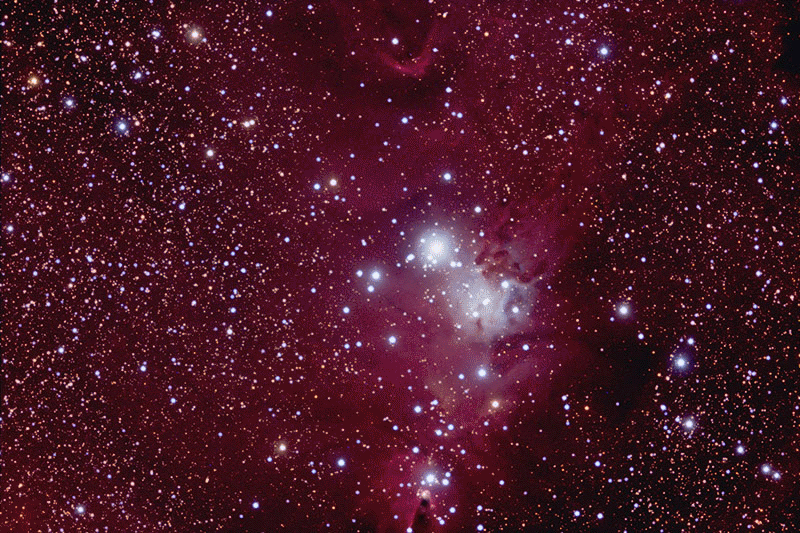
NGC 2264 taken while forgetting the little things! One night, 30 - ten minute exposures, EON120 scope, Atlas Mount, StarShoot Pro IV Camera, post processing in Photoshop. By Doug Hubbell.
It's been almost three months since my last imaging session. As a seasoned veteran I've been imaging for more than five years. I typically wait for the new moon and hope for clear skies. When first starting my adventure in astrophotography I made meticulous notes. These notes help me get started. Whenever something works for you take notes! It's surprising how fast we forget these little things.
Having spent countless hours under the night skies I don't need stinking notes...right?
The night begins with crystal clear skies. I am in my favorite winter and spring location in Oak Grove California, just north of Palomar Mountain in San Diego county. The sky hasn't been this clear in months! The polar alignment was a little difficult because of the trees, but, I managed to finish this 1st step. My gear is powered by field batteries and I noticed the familiar "charging" icon in the task bar is missing. That's strange, immediately it's time to go into "debug" mode because the entire night requires more power to run the laptop. Reseating and re-plugging the power doesn't seem to help and the "charging" icon isn't coming back. Ok, at this point my frustration is starting to grow, and thoughts of a short night creep inside my head. After swapping the power source still no "charging" icon...jeeeezzzzz. Then I think; "Have you Rebooted your computer?" Yep...after a reboot the "charging" icon appears!
The dark skies are mine! I'm ready! Or am I?
Next on the list is star alignment. I begin by pressing the buttons on the hand controller...about three button pushes into the star alignment the controller locks up! Wow that's Fun? Ok I've learned my lesson with my computer: a simple reboot should fix the problem! Right? Nope. After several reboots and thinking this crystal clear night is about to vanish, a memory returns: I pressed one of the buttons too hard and the button is stuck under the case. Sure enough, that was it! I moved the stuck button a little and I was able to continue my star alignment.
My imaging session started and I had all of my software dialed in...or did I? Well I forgot to set the number of frames (photos) high enough to capture photos all through the night. After taking a little nap I woke up to see my imaging session stopped early!
It's amazing how overlooking the tiny details can stop an imaging session. This brings me back to the importance of taking notes when you image. You should note all of your successful astrophotography accomplishments for reference. When times get tough and you're at your wits end your notes may bring back some sanity. What notes did I make during this session?
- Don't forget to reboot
- Press the hand controller buttons carefully and deliberately
- Set the maximum number of photos high enough
Let's hope we don't forget these little things because next time there will be a different set of challenges!
View more of Doug Hubbell's images in Orion's image gallery, and keep up with his Astrophotography Tutorials on his Facebook Page.
{ sourceURL:'/catalog/includes/quicklook_miniproduct.jsp?entityId=106416&entityTypeId=4', sourceSelector:'' }
{"showSinglePage":false,"totalItems":263,"defaultPageSize":20,"paging_next":"Next","paging_view_all":"View All 263 Items","paging_view_by_page":"View By Page","pageSize":20,"paging_previous":"Prev","currentIndex":80,"inactiveBuffer":2,"viewModeBeforePages":true,"persistentStorage":"true","showXofYLabel":false,"widgetClass":"CollapsingPagingWidget","activeBuffer":2,"triggerPageChanged":false,"defaultTotalItems":263}






Why Buy From Orion
- 30 Day Money Back Guarantee
- Safe & Secure Shopping
- Next Day Shipping
- Easy Returns
- Sale Price Guarantee
- Free Technical Support

Shop Our Catalogs
Check out our colorful catalog, filled with hundreds of quality products.
See our eCatalogsEmail Sign Up
- 800-447-1001
- Telescope.com
- © 2002- Orion Telescopes & Binoculars All rights reserved
- DMCA/Copyright
- Terms and Conditions
- Privacy & Security





About Orion Telescopes & Binoculars
Since 1975 Orion Telescopes & Binoculars has been offering telescopes for sale direct to customers. Now an employee-owned company, we pride ourselves on an unswerving commitment to best quality products, value and unmatched customer care. Our 100% satisfaction guarantee says it all.
Orion offers telescopes for every level: Beginner, Intermediate, Advanced, and Expert. From our entry level beginner telescopes for amateur astronomers to our Dobsonian telescopes to our most advanced Cassegrain telescopes and accessories, you can find the best telescope for you. Because we sell direct, we can offer you tremendous value at a great price. Not sure how to choose a telescope? Orion's Telescope Buyer's Guide is a great place to start.
Orion binoculars are known for quality optics at a great price. We offer binoculars for every viewing interest, including astronomical binoculars, compact binoculars, waterproof binoculars, birding binoculars, and sport and hunting binoculars.
Orion's telescope and astrophotography accessories will enhance your telescope enjoyment without breaking the bank. Expand your viewing experience with accessories ranging from moon filters to power-boosting Barlow lenses to advanced computerized telescope mounts. Capture breathtaking photos with our affordable astrophotography cameras. And when you're stargazing, Orion's telescope cases and covers, observing gear, red LED flashlights, astronomy books and star charts will make your observing sessions more convenient, comfortable and meaningful.
At Orion, we are committed to sharing our knowledge and passion for astronomy and astrophotography with the amateur astronomy community. Visit the Orion Community Center for in-depth information on telescopes, binoculars, and astrophotography. You can find astrophotography "how to" tips and share your best astronomy pictures here. Submit astronomy articles, events, & reviews, and even become a featured Orion customer!
sales, new products, and astronomy.




